- How it works

Useful Links
How much will your dissertation cost?
Have an expert academic write your dissertation paper!
Dissertation Services

Get unlimited topic ideas and a dissertation plan for just £45.00
Order topics and plan

Get 1 free topic in your area of study with aim and justification
Yes I want the free topic

Civil Engineering Dissertation Topics
Published by Carmen Troy at January 10th, 2023 , Revised On August 17, 2023
Introduction
The importance of civil engineering works in the modern world cannot be understated, thanks to the growing public and commercial infrastructure requirement. The main focus of civil engineering is to develop a sustainable society where businesses can flourish.
Civil engineers in today’s world are keen to develop sustainable buildings, and therefore sustainable construction research topics are frequently researched by civil engineering students.
To help you get started with brainstorming for civil engineering topic ideas, we have developed a list of the latest topics that can be used for writing your civil engineering dissertation project.
These topics have been developed by PhD-qualified writers of our team , so you can trust to use these topics for drafting your dissertation.
You may also want to start your dissertation by requesting a brief research proposal from our writers on any of these topics, which includes an introduction to the problem, research question , aim and objectives, literature review along with the proposed methodology of research to be conducted. Let us know if you need any help in getting started.
Check our example dissertation to get an idea of how to structure your dissertation .
You can review step by step guide on how to write your dissertation here.
2022 Civil Engineering Research Topics
Topic 1: building demolition- analyse the efficacy of destroying and ruining big city structures and their impact on the traffic..
Research Aim: Many big cities around the world have demolished a vast number of buildings that were functional with new structures. It not only has an economic impact but also results in the loss of urban culture, harms the environment, cause pollution, and also worsen the traffic situation. This study will evaluate the merits of building demotion and will provide economic, technical and environmental input.
Topic 2: Rural housing at low cost- Improving Water Diversion, Electricity Grids, and other Infrastructure to reduce the expenses.
Research Aim: Water, sanitation, wastewater systems, electricity, and rural infrastructure all impact human development outcomes. This study will examine rural housing at a low cost focusing on the improvement of water diversion, electricity grids and infrastructure services. It will also look into the policies made to avoid certain problems and help us understand how these things have influenced life in rural regions.
Topic 3: Examining the use of Activated Flash as a Binder in pavement adjustments to allow acceptable tension reinforcing stresses in order to Control Cracking in concrete.
Research Aim: This study will examine the use of activated flash as a binder in pavement adjustments to allow acceptable tension reinforcing stresses to control cracking. Cracks usually emerge as a result of mechanical loads, adverse response and environmental impact, and the frequent cracking negatively impacts the performance of concrete. This study will focus on the appropriate measures that should be taken, designs, material and construction practices to extend the life without any loss.
Topic 4: Strengthening an existing structure to allow it to withstand climate change - An analysis.
Research Aim: Buildings are dependent on environmental conditions. This study will analyse the strengthening of the existing structure to protect it from the effects of climate change. Focusing on the material used for the protection, sustainability and strengthening of the building and the adaption of new construction standards. A milder temperature will lower the lifespan of building materials and impact the indoor climate of the building. More storms, snow or subsidence damage, water encroachment, and a bad indoor environment all contribute to a reduced building lifespan, raising the risk of collapse, worsening health, and significant loss of value in return.
Topic 5: An investigation of the use of Graphene-Fabricated nanoparticles for Water Purification- Comparison between Cost-Effectiveness and Benefits.
Research Aim: The main goal of this study is to conduct a unique investigation of the use of manufactured nanomaterials of graphene for water purification. The project intends to undertake a comparison of the benefits and cost-effectiveness of graphene processes. Furthermore, this study also intends to give an evaluation of graphene nanomaterial’s impact on water treatment and will analyse many futures and emerging perspectives.
Covid-19 Civil Engineering Research Topics
Topic 1: civil engineering after coronavirus: identify the consequences of covid-19 on civil engineering in the uk or any country of your choice..
Research Aim: This research will focus on identifying the impacts of coronavirus on civil engineering in the selected country.
Topic 2: Research to study the damage caused to the construction projects due to the lack of workers on site.
Research Aim: This study will focus on identifying the damage caused to construction projects as the workers are staying away from the sites. What measures are taken to complete these projects and recover the loss?
Topic 3: Contractors and Builders after Covid-19: business industry, tender opportunities, and planning to continue business
Research Aim: This research aims at identifying the conditions faced by contractors and builders. What is their plan to deal with the COVID-19 crisis? How did it affect the business industry and tender opportunities?
Topic 4: Cite Operating Procedures: research the various safety measures for workers, contractors, and engineers working on construction sites.
Research Aim: This research is conducted to know about various safety measures taken by the government and private organisations for workers, contractors, and engineers working on construction sites.
Topic 5: Investigate how civil engineers are working from home: Identify whether remote working can be a long-lasting solution to recover the loss caused by Covid-19.
Research Aim: Remote working has emerged as a ray of hope for mechanical engineers amid this pandemic. This research will focus on the advantages and disadvantages of remote working and also answer the question of whether it is a long-lasting solution or not.
Topic 6: Research to study the economic and labour crisis as a result of Coronavirus
Research Aim: This research will focus on the financial loss and labour crisis caused due to the outbreak of the coronavirus pandemic.
Topic 7: Research to study the disruption of the supply chain, shortage of contractors, workers, and material, cancellation of contracts due to COVID-19
Research Aim: This research will focus on identifying the disruption of the supply chain, shortage of contractors, workers, and material, cancellation of contracts as a result of Covid-19.
Topic 8: Research to throw the light on the future of the construction Industry after the Coronavirus pandemic.
Research Aim: This research will focus on predicting how the construction industry will transform after the COVID-19 pandemic. What challenges may it face, and what could be the possible ways to meet those challenges?
Civil Engineering Dissertation Topics for 2021
Topic 1: computational mechanics and modelling.
Research Aim: This research aims to study the role of computational mechanics and to model In civil engineering
Topic 2: Development in Rock Mechanics
Research Aim: This research aims to highlight the recent developments in Rock Mechanics
Topic 3: Assessment of the bridges with innovative ideas
Research Aim: This research aims to address the need to assess bridges and propose innovative ideas for bridge constructions and designs.
Topic 4: Efficiently managing the water resources
Research Aim: This research aims to focus on the effective management of water resources during constructions
Topic 5: Stability of high rise buildings
Research Aim: This research aims to address the issues of the instability of high-rise buildings and stress on ensuring their stability by highlighting the gaps in the literature review and providing a strong recommendation for researchers.
Civil Engineering Dissertation Topics for 2020
Topic 1: reliability of foundation performance and implications for structural design.
Research Aim: The main purpose of the research will be to use a reliability-based approach to performance by using two complementary approaches; macroscopic and action-oriented approach and microscopic and analysis-oriented approach to evaluate major risks and strategies that can be used to implement in complicated structural systems and designs.
Find 100s of dissertation topics in your other academic subjects in our free topics database.
Topic 2: Behavior of steelwork connection at large deflection in a fire
Research Aim: This research study will explore the behaviour of steelworks at large deflection in a fire. The researcher will use a unified computing model to simulate the behaviour of steelworks and their impacts on the deflection in the fire. Several other factors will also be identified in the study, such as limiting temperature criteria, loading and unloading effects, and explosion load ratios.
Topic 3: User-friendly model of degrading groundwater pollution plume
Research Aim: Groundwater pollution plumes consist of degradable compounds and materials, which results in declining the overall natural processes and their effectiveness to marine life. There have been studies that aimed to explore the slow degradation processes of pollution plumes in groundwater. However, this is particular research will aim to explore different factors that cause groundwater pollution plumes and contributes to its slow degradation process. Finally, the study will propose a user-friendly model to degrade the groundwater pollution plume.
Topic 4: Examination of advanced solution strategies for non-linear FE analysis
Research Aim: This research is aimed to explore the role of advanced solution strategies that help the engineers and builders to carry out Non-linear FE analysis. In this study, the researcher will demonstrate the static and dynamic problems related to the non-linear effects of solid structures and systems.
Topic 5: Strength, stiffness, non-linearity, and the volumetric response of concrete under triaxial compression
Research Aim: In this study, the researcher will demonstrate the behaviour of concrete under the situation of triaxial compression. The researcher aims to understand the stiffness, volumetric and compressive behaviour of concrete which may cause the deformation in concrete when pressure is applied.
- Research to Set up Remote Sensing Applications to Assist in the Development of Sustainable Enterprise
- Research to Study and Develop Water Treatment Processes
- Research to Study Sustainable Construction Materials and Technologies
- Research to Study Sustainable Engineering: New Objectives for Construction Projects
- Research Regarding Micromechanics of Granular Materials.
- Research to Transform a Manufacturing Plant to a Sustainable Enterprise.
- Research to Study the Relationship Between Sustainability and Learning Organisation.
- Research to Study the Impact of Sustainability Concepts on Organisational Growth and Development.
- Research to Ensure Sustainable Heat Conservation Generated from Compressors within a Manufacturing Site.
- Research to Study and Develop Waste Reduction Strategy to Achieve Sustainable Concepts
- Research to Study Properties of Concrete to Achieve Sustainability.
- Research to Study the Relationship between Lean Manufacturing and Sustainable Manufacturing.
- Research to Study Sustainability and its Impact on Learning Organisation.
- Development of Sustainable Homes with the Help of Renewable Energy Sources.
- Seismic Design of Cold Formed Steel Structures in Residential Applications
- Living Tree Buildings
Also Read: Human Resource Management Dissertation Topics
- Application of Ultra High Strength Concrete in LNG Terminals
- Mechanical Behaviour of Bridge Bearings of Concrete Bridges
- Winter Damage of Porous Asphalt
- Human Induced Lateral Vibration of Bridges
- The Optimization of Tripod Substructure and its Application to Two Different Topsides
- Traffic Induced Bearing Loads and Movements of a Steel Plate-girder Bridge
- Snap through of Large Shield Driven Tunnels
- A Timber Bearing Structure for ‘Concept House
- The Sustainable Refurbishment of BK City
- The Elevated Metro Structure in Concrete, UHPC, and Composite
- Covering A28 Highway at Amersfoort
- Numerical Modelling of Turbidity Currents in Submarine Channels
- Post-trenching with a Trailing Suction Hopper Dredge
- Morphological Impact of Coastal Structures
- Modelling Nearshore Currents Driven by Waves and Set-up Gradients
- Gaining New Insights Regarding Traffic Congestion, by Explicitly Considering the Variability in Traffic
- Dynamic Behaviour of Tunnel Elements 38 During the Immersion process
- Long-term Morphological M0delling of the Mouth of the Columbia River
- “Feasibility Study of a Climate Dike”
- Conditioning of Aggressive Water
- Swale Filter Drain System: The Inflow – Discharge Relation.
- Low Cost Disdrometer
- Observing Tidal Slack in the Scheldt Estuary
- Clogging of Permeable Pavements 53 in Semi-arid Areas
- Analyzing the Effects of Large-scale Green Roof Implementation in Singapore
- Accelerating the Introduction of Electric Bicycles
- A Critical Reappraisal of Some Problems in Engineering Seismology
- Systems and Sustainability: Sustainable development, Civil engineering and the Formation of the Civil Engineer
- Sustainable Engineering: The Future of Structural Design
- Environmentally Sustainable Construction Products and Materials – Assessment of release
Not Sure Which Dissertation Topic to Choose? Use Our Topic Planning Service
Also Read: Dissertation Topics in Engineering Management
Important Notes:
As a civil engineering student looking to get good grades, it is essential to develop new ideas and experiment on existing civil engineering theories – i.e., to add value and interest in your research topic.
The field of civil engineering is vast and interrelated to so many other academic disciplines like construction , law , engineering management , healthcare , mental health , artificial intelligence , tourism , physiotherapy , sociology , management , marketing and nursing . That is why it is imperative to create a project management dissertation topic that is articular, sound, and actually solves a practical problem that may be rampant in the field.
We can’t stress how important it is to develop a logical research topic; it is the basis of your entire research. There are several significant downfalls to getting your topic wrong; your supervisor may not be interested in working on it, the topic has no academic creditability, the research may not make logical sense, there is a possibility that the study is not viable.
This impacts your time and efforts in writing your dissertation as you may end up in the cycle of rejection at the very initial stage of the dissertation. That is why we recommend reviewing existing research to develop a topic, taking advice from your supervisor, and even asking for help in this particular stage of your dissertation.
While developing a research topic, keeping our advice in mind will allow you to pick one of the best civil engineering dissertation topics that fulfil your requirement of writing a research paper and add to the body of knowledge.
Therefore, it is recommended that when finalizing your dissertation topic, you read recently published literature to identify gaps in the research that you may help fill.
Remember- dissertation topics need to be unique, solve an identified problem, be logical, and be practically implemented. Please take a look at some of our sample civil engineering dissertation topics to get an idea for your dissertation.
How to Structure your Dissertation on Civil Engineering
A well-structured dissertation can help students to achieve a high overall academic grade.
- A Title Page
- Acknowledgements
- Declaration
- Abstract: A summary of the research completed
- Table of Contents
- Introduction : This chapter includes the project rationale, research background, key research aims and objectives, and the research problems to be addressed. An outline of the structure of a dissertation can also be added to this chapter.
- Literature Review : This chapter presents relevant theories and frameworks by analysing published and unpublished literature available on the chosen research topic, in light of research questions to be addressed. The purpose is to highlight and discuss the relative weaknesses and strengths of the selected research area whilst identifying any research gaps. Break down of the topic, and key terms can have a positive impact on your dissertation and your tutor.
- Methodology: The data collection and analysis methods and techniques employed by the researcher are presented in the Methodology chapter which usually includes research design, research philosophy, research limitations, code of conduct, ethical consideration, data collection methods, and data analysis strategy .
- Findings and Analysis: Findings of the research are analysed in detail under the Findings and Analysis chapter. All key findings/results are outlined in this chapter without interpreting the data or drawing any conclusions. It can be useful to include graphs , charts, and tables in this chapter to identify meaningful trends and relationships.
- Discussion and Conclusion: The researcher presents his interpretation of results in this chapter, and states whether the research hypothesis has been verified or not. An essential aspect of this section of the paper is to draw a linkage between the results and evidence from the literature. Recommendations with regards to implications of the findings and directions for the future may also be provided. Finally, a summary of the overall research, along with final judgments, opinions, and comments, must be included in the form of suggestions for improvement.
- References: This should be completed in accordance with your University’s requirements
- Bibliography
- Appendices: Any additional information, diagrams, graphs that were used to complete the dissertation but not part of the dissertation should be included in the Appendices chapter. Essentially, the purpose is to expand the information/data.
About ResearchProspect Ltd
ResearchProspect is a UK based academic writing service that provides help with Dissertation Proposal Writing , PhD Proposal Writing , Dissertation Writing , Dissertation Editing and Improvement .
For further assistance with your dissertation, take a look at our full dissertation writing service .
Our team of writers is highly qualified. They are experts in their respective fields. They have been working in the industry for a long time, thus aware of its issues and trends.
Need more Topics.?
Free Dissertation Topic
Phone Number
Academic Level Select Academic Level Undergraduate Graduate PHD
Academic Subject
Area of Research
Frequently Asked Questions
How to find dissertation topics about civil engineering.
To discover civil engineering dissertation topics:
- Investigate emerging technologies.
- Analyze infrastructure challenges.
- Explore sustainability and green solutions.
- Review recent research in journals.
- Consider urban planning or construction innovations.
- Opt for a topic aligning with your passion and career aims.
You May Also Like
As a computer networking student, you have a variety of networking topics to choose from. With the field evolving with each passing day.
The goal of marketing is to promote goods and services and increase sales for your business by creating, sharing, and planning. The MBA marketing dissertation ensures 100% profits and excellent customer service.
The field of business ethics entails establishing the moral rules that govern an organisation’s conduct or administration.
USEFUL LINKS
LEARNING RESOURCES

COMPANY DETAILS

- How It Works
Thank you for visiting nature.com. You are using a browser version with limited support for CSS. To obtain the best experience, we recommend you use a more up to date browser (or turn off compatibility mode in Internet Explorer). In the meantime, to ensure continued support, we are displaying the site without styles and JavaScript.
- View all journals
Civil engineering articles from across Nature Portfolio
Civil engineering is the design and fabrication of structures for improving the way we live and work and for enabling rapid, safe and high-volume transportation. Examples include building roads, railways, bridges, canals, skyscrapers and factories. Modern civil engineering often places a focus on aesthetic considerations and environmental impact.
Latest Research and Reviews
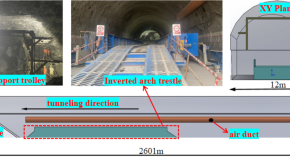
Research of wet string grid dust removal vehicle and creation of dust control area on tunnel working face
- Shiqiang Chen
- Jiujun Cheng

Impacts of remote work on vehicle miles traveled and transit ridership in the USA
This study assesses the effects of working-from-home on vehicle miles traveled and transit ridership during the pandemic and finds a direct and negative relationship between them: a 1% decrease in onsite workers corresponds to a 0.99% decrease in vehicle miles traveled and a 2.26% decrease in transit ridership.
- Yunhan Zheng
- Shenhao Wang
- Jinhua Zhao
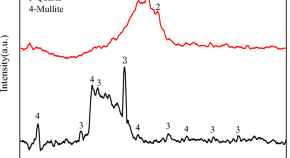
Effect of borax-modified activator on mechanical properties and drying shrinkage of alkali-activated slag/metakaolin mortar
- Haiming Chen
- Ziguang Qin
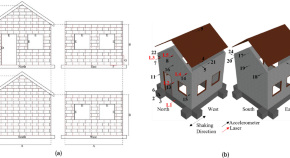
Shaking table tests of a one-quarter scale model of concrete hollow block masonry houses retrofitted with fiber-reinforced paint
- Zamzam Multazam
- Kenjiro Yamamoto
- Kimiro Meguro
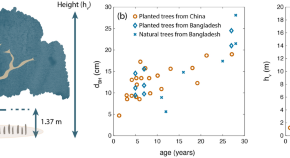
Integrating mangrove growth and failure in coastal flood protection designs
- A. Gijón Mancheño
- M. van Ledden
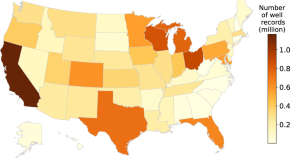
A database of groundwater wells in the United States
- Chung-Yi Lin
- Alexandra Miller
- Landon T. Marston
News and Comment
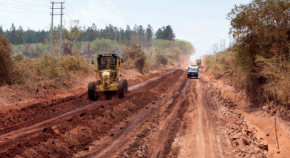
Inclusive and resilient mobility
- Danyang Cheng
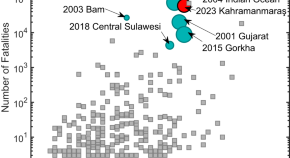
The 2023 Kahramanmaraş Earthquake Sequence: finding a path to a more resilient, sustainable, and equitable society
Learning from the 2023 Kahramanmaraş Earthquake Sequence offers valuable insights into disaster recovery. Carmine Galasso and Eyitayo Opabola delve into the intricacies of the “Build Back Better” (BBB) concept, underscoring the importance of recovery and reconstruction efforts toward a future that is not only more resilient but also more sustainable and equitable.
- Carmine Galasso
- Eyitayo A. Opabola
Material durability, material failure, and material investment—the complexity of concrete
Recent high-profile concrete material failures, including the collapse of parts of public buildings in the UK, have highlighted the need for a greater understanding of the durability of concrete. Here, John Provis explores the need to recognise the complexity of concrete when planning both the research and application of this key construction material.
- John L. Provis
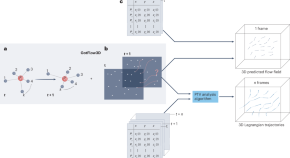
Catching up with missing particles
The implementation of particle-tracking techniques with deep neural networks is a promising way to determine particle motion within complex flow structures. A graph neural network-enhanced method enables accurate particle tracking by significantly reducing the number of lost trajectories.
- Séverine Atis
- Lionel Agostini
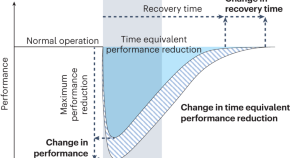
Increasing resilience with wastewater reuse
Drinking water infrastructure in urban settings is increasingly affected by population growth and disruptions like extreme weather events. The integration of direct wastewater reuse can help to maintain drinking water service when the system is compromised.
- Katherine A. Klise
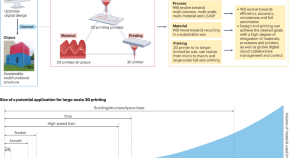
Propelling the widespread adoption of large-scale 3D printing
3D printing can be used to automate the manufacturing of building elements for large-scale structures such as skyscrapers, aircraft, rockets and space bases without human intervention. However, challenges in materials, processes, printers and software control must first be overcome for large-scale 3D printing to be adopted for widespread applications.
- Wouter De Corte
- Viktor Mechtcherine
Quick links
- Explore articles by subject
- Guide to authors
- Editorial policies
200+ Civil Engineering Research Topics: Exploring Promising Topics

Civil engineering research is the driving force behind the development of sustainable infrastructure and innovative construction methods. It plays a crucial role in shaping our world, from designing earthquake-resistant buildings to developing advanced transportation systems.
In this blog post, we will explore the importance of choosing the right civil engineering research topics and provide a list of promising research areas to inspire your academic journey.
Why Choose the Right Research Topic?
Table of Contents
Before delving into the exciting world of civil engineering research topics, it’s important to understand why selecting the right research topic is critical.
- Impact of the Research Topic Selection: The choice of your research topic can have a profound impact on your academic and professional career. A well-defined, relevant topic can lead to groundbreaking discoveries, publications, and recognition in the field.
- Facilitation of the Research Process: A clearly defined research topic serves as your roadmap. It guides your literature review, data collection, experimentation, and analysis. Without a focused topic, research can become directionless and overwhelming.
- Benefits of a Relevant and Engaging Topic: An engaging topic keeps you motivated throughout your research journey. It’s much easier to stay dedicated when you’re passionate about your subject matter.
How to Select the Perfect Civil Engineering Research Topics?
Choosing the right research topic in civil engineering is a crucial step in your academic and professional career. Here are some steps to help you make the best choice:
- Consider Your Interests and Passion: Think about what aspects of civil engineering interest you the most. Are you fascinated by structural design, transportation systems, environmental issues, or construction management? Choosing the civil engineering research topics that align with your interests will make the research process more enjoyable and meaningful.
- Review Recent Developments in the Field: Stay updated with the latest trends and breakthroughs in civil engineering. Browse through academic journals, magazines, and websites to identify emerging issues and areas of interest.
- Assess the Feasibility and Resources Available: Ensure that your chosen topic is feasible given the resources and facilities at your disposal. You should have access to the necessary equipment, data, and expertise to conduct your research effectively.
- Discuss with Professors and Mentors: Seek advice from your professors and mentors. They can provide valuable insights, suggest potential research questions, and guide you in the right direction.
- Explore Interdisciplinary Possibilities: Civil engineering is often interconnected with other fields. Consider exploring interdisciplinary research topics that combine civil engineering with subjects like materials science, environmental science, or computer science for a unique perspective.
200+ Civil Engineering Research Topics: Category Wise
Structural engineering.
- Innovative materials for earthquake-resistant buildings.
- Advancements in bridge design and construction.
- Sustainable skyscraper designs.
- Application of nanotechnology in structural engineering.
- Rehabilitation of historic structures using modern techniques.
- Seismic retrofitting of critical infrastructure.
- Wind and earthquake-resistant building designs.
- Performance-based design of structures.
- Structural health monitoring for bridges and buildings.
- Resilient design for extreme weather conditions.
Geotechnical Engineering
- Soil stabilization techniques for foundation support.
- Geotechnical investigation methods in urban areas.
- Landslide prediction and prevention.
- Seismic site characterization and liquefaction assessment.
- Innovative foundation systems for high-rise buildings.
- Soil-structure interaction in deep foundations.
- Geotechnical challenges in offshore engineering.
- Sustainable slope stabilization methods.
- Ground improvement techniques for soft soils.
- Geothermal energy extraction from the Earth’s crust.
Transportation Engineering
- Traffic management and congestion reduction strategies.
- High-speed rail systems and urban development.
- Autonomous vehicles and their role in future transportation.
- Sustainable urban transportation planning.
- Transportation network optimization using AI.
- Public transportation infrastructure development.
- Pedestrian and cyclist-friendly city design.
- Environmental impact assessment in transportation projects.
- Intelligent transportation systems for smart cities.
- Emergency evacuation and traffic management.
Environmental Engineering
- Water treatment and purification methods.
- Green infrastructure and urban stormwater management.
- Wastewater treatment plant optimization.
- Air quality monitoring and pollution control technologies.
- Groundwater contamination assessment and remediation.
- Solid waste management in urban areas.
- Renewable energy generation from waste.
- Climate change adaptation in infrastructure design.
- Eco-friendly construction materials and practices.
- Sustainable urban planning and design.
Construction Management
- Learn construction techniques and practices.
- Building Information Modeling (BIM) applications in construction.
- Safety management in construction projects.
- Risk management in construction projects.
- Quality control and assurance in construction.
- Sustainable construction materials and methods.
- Project scheduling and time management.
- Cost estimation and budget management in construction.
- Construction contract management and dispute resolution.
- Innovative prefabrication and modular construction techniques.
Materials Engineering
- Development of advanced construction materials.
- Durability of concrete in harsh environments.
- Recycling and reuse of construction materials.
- Nano-materials in construction.
- Sustainable construction materials.
- Corrosion protection for infrastructure.
- High-performance concrete mix design.
- Materials for lightweight and high-strength structures.
- Fire-resistant building materials.
- Testing and quality control of construction materials.
Water Resources Engineering
- River basin management and flood control.
- Watershed modeling and management.
- Sustainable urban water supply systems.
- Urban drainage system design and management.
- Dams and reservoir engineering.
- Water resource optimization and allocation.
- Water quality modeling and management.
- Climate change impact on water resources.
- Groundwater recharge and management.
- Desalination technologies for freshwater production.
Coastal and Ocean Engineering
- Coastal erosion control and beach nourishment.
- Offshore wind energy farms and their impact.
- Design of marine structures for port facilities.
- Coastal zone management and resilience.
- Coastal hydrodynamics and wave modeling.
- Tidal energy harnessing and environmental considerations.
- Coastal protection against storm surges and tsunamis.
- Oceanography and marine environmental studies.
- Design of breakwaters and seawalls.
- Harbor and navigation channel design.
Earthquake Engineering
- Seismic hazard assessment and mapping.
- Retrofitting of existing structures for earthquake resistance.
- Seismic design of lifeline systems (water, gas, power).
- Soil-structure interaction in seismic events.
- Non-destructive testing for seismic damage assessment.
- Seismic behavior of innovative materials.
- Performance-based earthquake engineering.
- Post-earthquake reconnaissance and lessons learned.
- Seismic risk assessment and mitigation strategies.
- Earthquake early warning systems.
Bridge Engineering
- Innovative bridge designs and aesthetics.
- Long-span bridge construction and materials.
- Cable-stayed and suspension bridge technology.
- Bridge health monitoring and maintenance.
- Bridge inspection and assessment techniques.
- Advanced seismic retrofitting of bridges.
- Smart bridges and sensor technology.
- Bridge management and asset management systems.
- Innovative bridge construction techniques.
- Load rating and capacity evaluation of existing bridges.
Traffic Engineering
- Traffic flow modeling and simulation.
- Adaptive traffic signal control systems.
- Pedestrian and cyclist safety studies.
- Intelligent transportation systems for traffic management.
- Congestion pricing and traffic demand management.
- Driver behavior analysis and safety measures.
- Intermodal transportation planning.
- Traffic impact assessment of new developments.
- Transportation planning for urban and rural areas.
- Sustainable transportation infrastructure.
Urban Planning and Design
- Sustainable urban development and planning.
- Smart city infrastructure and technology integration.
- Urban revitalization and brownfield redevelopment.
- Transit-oriented development (TOD) planning.
- Green building and urban design.
- Affordable housing design and policy.
- Historical preservation and urban conservation.
- Mixed-use development and zoning.
- Resilient urban planning for climate change.
- Inclusive and accessible urban design.
Surveying and Geospatial Engineering
- Land surveying and cadastral mapping advancements.
- Remote sensing and GIS applications in civil engineering.
- 3D laser scanning and point cloud data analysis.
- Geodetic surveying for infrastructure projects.
- UAVs (drones) in geospatial data collection.
- GPS technology for precise positioning in construction.
- BIM integration with geospatial data.
- Underground utility mapping and detection.
- Geospatial analysis for disaster management.
- Geospatial data privacy and security.
Energy-Efficient Buildings
- Net-zero energy building design.
- Energy-efficient HVAC and lighting systems.
- Passive solar design for buildings.
- Green roofs and living walls in urban design.
- Building energy modeling and simulation.
- Building envelope insulation and materials.
- Daylight harvesting and control systems.
- Carbon footprint reduction in building design.
- Sustainable building certification (LEED, BREEAM, etc.).
- Building-integrated renewable energy systems.
Advanced Computational Techniques
- Finite element analysis in structural design.
- Computational fluid dynamics for hydraulic modeling.
- Artificial intelligence in civil engineering applications.
- Machine learning for predictive maintenance in infrastructure.
- Optimization algorithms for infrastructure design.
- High-performance computing in engineering simulations.
- Data analytics for infrastructure asset management.
- Digital twins in civil engineering projects.
- 3D modeling and visualization tools for design.
- Virtual reality (VR) and augmented reality (AR) in construction.
Disaster Resilience and Risk Management
- Disaster risk reduction strategies for infrastructure.
- Post-disaster recovery and reconstruction planning.
- Seismic and tsunami hazard mitigation measures.
- Floodplain mapping and management.
- Climate change adaptation for infrastructure.
- Resilience of lifeline systems (water, power, etc.).
- Risk assessment and vulnerability analysis.
- Emergency response planning for natural disasters.
- Insurance and financing for disaster recovery.
- Public awareness and education for disaster preparedness.
Sustainable Transportation Technologies
- Electric and hybrid vehicles in transportation.
- Hydrogen fuel cell technology in transport.
- Sustainable fuels for aviation and shipping.
- High-speed magnetic levitation (maglev) trains.
- Hyperloop transportation system feasibility.
- Green infrastructure for urban transportation.
- E-mobility and charging infrastructure.
- Sustainable transportation policy development.
- Impact of ride-sharing and carpooling on traffic.
- Multi-modal transportation integration.
Innovative Bridge Materials
- Self-healing concrete in bridge construction.
- Carbon fiber-reinforced polymers (CFRP) in bridges.
- Ultra-high-performance concrete (UHPC) for bridge connections.
- Bamboo as a sustainable bridge building material.
- Bridge cable materials and corrosion resistance.
- Innovative composites for bridge components.
- Timber bridge construction and sustainability.
- Green bridge design with vegetation integration.
- Recycled and upcycled materials in bridge building.
- Smart materials for real-time bridge health monitoring.
Smart Infrastructure and IoT
- Internet of Things (IoT) applications in infrastructure.
- Sensor networks for structural health monitoring.
- Smart traffic management systems and IoT.
- Predictive maintenance of infrastructure using IoT.
- Asset tracking and management in construction.
- Smart city infrastructure development.
- Energy-efficient street lighting systems.
- Environmental monitoring with IoT.
- Remote control and automation of infrastructure.
- Data analytics for smart infrastructure decision-making.
Nanotechnology in Civil Engineering
- Nanomaterials for enhanced construction materials.
- Nanosensors for structural health monitoring.
- Nanotechnology applications in water treatment.
- Nano-coatings for corrosion protection.
- Nanomaterials in geotechnical engineering.
- Nanoparticles for pollutant removal in soil and water.
- Nanofibers in lightweight and high-strength materials.
- Nanostructured materials for earthquake resistance.
- Nanorobotics for infrastructure inspection and repair.
- Nanotechnology in sustainable building design.
Examples of Recent Research Breakthroughs
To illustrate the impact of research in civil engineering, let’s look at a few recent breakthroughs in the field:
- 3D-Printed Concrete Structures: Researchers have developed 3D-printing technology that can construct complex concrete structures, offering cost-effective and sustainable building solutions.
- Self-Healing Materials: Self-healing materials , such as concrete that can repair its own cracks, have the potential to extend the lifespan of infrastructure.
- Smart Transportation Systems: Smart transportation systems use real-time data and sensors to optimize traffic flow and reduce congestion, making transportation more efficient and sustainable.
- Zero-Energy Buildings: Research into zero-energy buildings has led to the development of structures that produce as much energy as they consume, reducing the environmental impact of construction.
Challenges and Considerations
As you embark on your civil engineering research topics journey, consider these challenges and important factors:
- Ethical Considerations: Ensure that your research is conducted with the highest ethical standards, considering the safety and well-being of both people and the environment.
- Funding Opportunities and Grants: Seek out funding sources and grants to support your research endeavors. Many organizations offer financial support for innovative civil engineering projects.
- Collaboration and Networking: Collaborate with fellow researchers, attend conferences, and join professional organizations to network and stay updated with the latest developments in the field.
Selecting the right civil engineering research topics are the first and most crucial step in your journey as a civil engineering researcher. The choice of topic can define the impact and success of your research. The field of civil engineering is vast, dynamic, and full of exciting possibilities.
Whether you’re interested in structural engineering, geotechnical engineering, transportation systems, environmental engineering, or construction management, there are countless avenues to explore.
As you embark on your research, remember that every innovation in civil engineering contributes to a more sustainable and advanced world.
Related Posts

Step by Step Guide on The Best Way to Finance Car

The Best Way on How to Get Fund For Business to Grow it Efficiently
School of Engineering
Guide to writing a research proposal for an engineering phd.
An important part of your PhD application is the research proposal so we want to know what your research interests are so that we may direct your application to potential supervisors. The proposal does not need be long, but the quality should be high and no more than 2-3 pages should be sufficient. Ideally your proposal should address the points below however as long as we get a clear idea of your research interests then we can consider your application.
- Ensure that your research interests match those in the School of Engineering.
- Outline the main objectives of your research, providing details of two or three key aspects.
- State your target audience for this project.
- Explain what the main outcomes of the project are that you would want to see.
- Outline what methods/approaches you intend to use to achieve the aims of your project.
- Indicate your suggested data collection procedures, including sources and any possible difficulties.
- Explain any analytical techniques you intend to use for your research.
- Broad research areas which would be unmanageable as a PhD topic or that have no relevance to the University of Warwick research areas.
- Vague descriptions of your research interests.
How to Write a Civil Engineering Proposal + 7 Pro Tips
- AEC Marketing
- Educating and Informing
Posted by: Cinthya Soto
Crafting a civil engineering proposal can be an overwhelming task, given its critical role in securing projects and laying the groundwork for successful project execution. However, if you know how to write a civil engineering proposal and implement the right software, creating a winning RFP response becomes efficient and easy.
In this blog, we teach you the essentials of writing a compelling and comprehensive proposal that stands out to clients. We also highlight the importance of why proposal software isn’t just an option, but a necessity.
Plus, to give you an edge, we’ve compiled seven professional tips that go beyond the basics—strategies that seasoned professionals use to elevate their proposals from good to exceptional.

Why Are Civil Engineering Proposals Important?
Civil engineering proposals are essential for participating in the bidding process for new projects. They provide a detailed plan of the project’s scope, methodology, and costs, which helps potential clients evaluate the feasibility and efficiency of the team undertaking the project.
Ultimately, crafting a winning civil engineering proposal can help you win more business and help your AEC firm grow. In fact, RFP-influenced revenue rose 6% between 2022 and 2023.
What Should Be Included in a Civil Engineering Project Proposal?
Creating a civil engineering project proposal requires a structured approach to ensure all necessary details are covered comprehensively. Here’s what should be included in such a proposal:
Executive Summary
The executive summary serves as the proposal’s forefront, offering a concise overview of the project at hand. It should articulate the project’s purpose, its overarching goals, and the significant benefits it aims to deliver.
This section should act as the proposal introduction . Therefore, it should have a compelling hook, designed to capture the interest of the reader by highlighting the proposal’s relevance and the unique value proposition of the engineering team.
It sets the stage for the detailed exposition that follows, ensuring that the reader understands the proposal’s importance and the transformative potential of the project.
Define the Project Scope
Defining the project scope involves describing the boundaries of the project, outlining what will be accomplished, and what will fall outside the project’s scope. This section should address the identified needs or problems the project aims to solve, providing a clear picture of the expected outcomes.
By detailing the project’s scope, the proposal ensures that all stakeholders have a shared understanding of the project’s limits and possibilities, helping manage expectations and focus efforts on the agreed-upon goals.
Set a Budget
Setting a budget is crucial for outlining the financial plan of the project. This section should include a detailed breakdown of all estimated costs, including:
- Labor
- Materials
- Equipment
- Any contingencies
It is important to justify each cost element, showing how the allocated funds will contribute to the project’s objectives. A well-justified budget not only demonstrates the proposal’s financial feasibility but also reflects the team’s thorough planning and understanding of the project’s financial requirements.
Determine a Timeline
A detailed timeline is essential for demonstrating the project’s schedule and milestones. This section should map out the phases of the project, from start to finish, with start and end dates for each critical task.
It should also highlight key milestones and their significance to the project’s overall timeline. A clear, well-structured timeline ensures that all stakeholders have realistic expectations about the project’s duration and can plan accordingly.
Moreover, a timeline illustrates the team’s commitment to meeting deadlines and efficiently managing the project’s progression.
Follow the Project Plan and Requirements
The project plan is a comprehensive section that lays out the specific objectives, requirements, and deliverables of the project. It should detail the technical and operational strategies to be used, the criteria for success, and how the project aligns with the client’s objectives.
This portion of the proposal demonstrates the team’s approach to achieving the project’s goals, outlining the methodologies, technologies, and standards that will be applied. It’s where the engineering team’s expertise and innovative solutions are showcased, providing confidence in their ability to deliver the project successfully.
Create a Compelling Project Proposal
With all the essential information and specifics at hand, the next step involves writing a compelling civil engineering proposal. Remember to articulate the goals, advantages, and projected timeline of the project with clarity, alongside outlining possible challenges and the approaches to solve them.
Moreover, highlight your proficiency and experience, drawing attention to your previous accomplishments to reinforce trust in your capability to achieve the desired outcomes.
7 Tips for a Civil Engineering Proposal That Wins Business
However, if you’re still unsure about how you can create a civil engineering proposal that wins more business, here are some tips you can follow to help you create your proposals with confidence:
1. Collaboration Between Civil Engineers and Marketers
Collaboration between civil engineers and marketers or proposal writers is crucial for crafting a winning proposal.
Why? Civil engineers bring technical expertise, ensuring the proposal is based on feasible engineering practices and solutions while marketers or proposal writers contribute by refining the message, emphasizing the benefits, and making the proposal appealing to a non-technical audience.
This team effort ensures the proposal is both appealing to the reader and explains the solution compellingly. This effectively communicates the project’s value proposition.
2. Select the Right Team Members
The success of a civil engineering project is largely dependent on the expertise, coordination, and collaboration of its project team.
Therefore, include a section that outlines the team responsible for bringing the project to life. Detail their roles, responsibilities, and qualifications in their employee RFP resumes to ensure the client you’ve selected the best employees with the right expertise for the project.
How can you avoid spending hours on this section while creating efficient employee resumes? With a Digital Asset Management (DAM) tool for engineering that has an Employee Module .
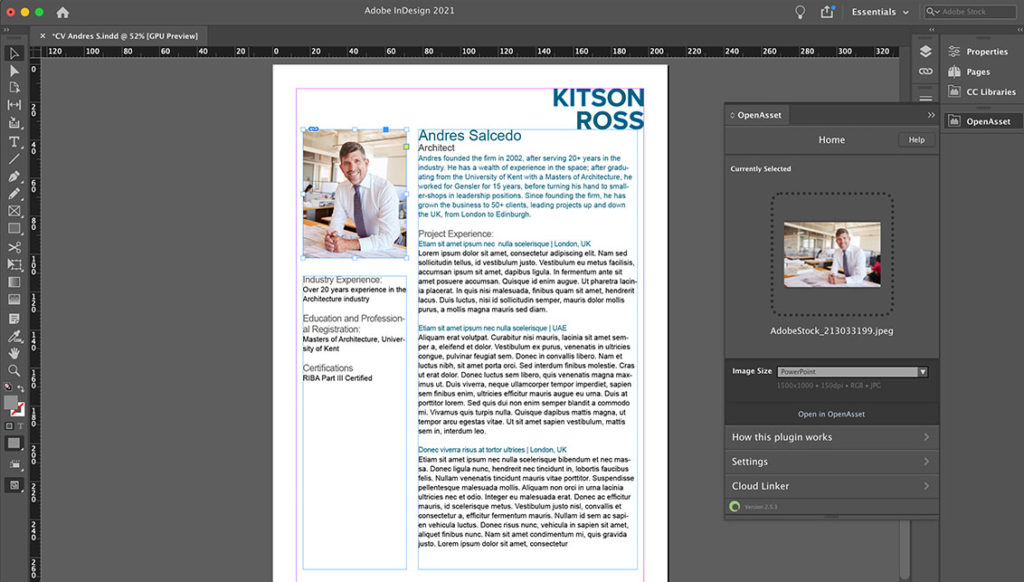
Your team’s resumes go beyond summaries of qualifications—they are powerful documents that highlight your team’s capabilities. OpenAsset , a DAM solution tailored for the AEC industry, makes the task of crafting optimal RFP resumes more efficient than before.
Using OpenAsset’s dedicated Employee Module, you’re not just building a resume; you’re creating a narrative. It allows you to showcase the depth of your team’s expertise, from the experienced architect with a portfolio of landmark projects to the innovative young engineer with groundbreaking ideas, emphasizing that every detail counts.
Moreover, the Employee Module enhances your organization’s productivity by streamlining the generation of resume documents and enabling seamless synchronization of employee information between OpenAsset and your CRM or ERP systems.
3. Create a Checklist
Creating a checklist of all required elements is a strategic approach to ensure your proposal is comprehensive and doesn’t miss anything critical. This checklist should include:
- Project objectives
- Scope of work
- Methodology
- Timeline
- Budget
- Qualifications of the project team
- Any client-specific requirements
This checklist helps in addressing each component, ensuring thoroughness and adherence to RFP requirements.
4. Double-Check Your Work
Having another set of eyes review your proposal can make a huge difference in the success of your proposal. This can be someone within your team or an external reviewer who can provide a fresh perspective.
They can catch errors, offer suggestions for improvement, and ensure that the proposal is clear and persuasive. This peer review process is crucial for enhancing the quality and effectiveness of your proposal.
5. Have Strong Communication With Your Team
Effective communication within your team about deadlines and workload distribution is essential for managing the proposal development process efficiently. Setting clear expectations and regular check-ins can help ensure that all components of the proposal are progressing as planned and that any challenges are addressed right away.
Additionally, this proactive communication builds teamwork and ensures that the proposal is completed on time and to a high standard.
6. Turn Your Weaknesses Into Your Strengths
Acknowledging and addressing your firm’s perceived weaknesses can actually enhance your proposal’s appeal. Instead of hiding them, strategically transform these aspects into strengths by demonstrating proactive measures and innovative solutions.
For example, if your firm lacks experience in a specific area, emphasize your fresh perspective, adaptability, and the cutting-edge techniques you bring to the table. Highlight partnerships with more experienced consultants or the specialized training your team has undertaken.
This approach shows potential clients that your firm is not only aware of its limitations but is also committed to growth, learning, and excellence, turning potential vulnerabilities into compelling reasons for selection.
7. Know When to Let Go of a Proposal
Recognizing when a project is not the right fit for your firm is crucial when it comes to any AEC proposal. Investing time and resources into bids with slim chances of success can drain your team’s energy and divert attention from more attainable opportunities.
Develop criteria for evaluating the feasibility and alignment of each RFP with your firm’s strengths, experience, and strategic goals. To do so, you can establish a go/no-go process to help you determine whether a business opportunity is worth the effort. If an RFP doesn’t align well, it might be wiser to pass and focus on opportunities where your firm can truly excel and deliver value.
Understanding when to let go frees up resources to concentrate on proposals that are not just winnable but also rewarding, allowing you to apply your efforts where they can make the most impact.
Software to Make Civil Engineering Proposals Easier
Implementing proposal software results in greater team satisfaction. However, that’s only one of the many advantages of using proposal software, like a DAM.
The primary advantages of using proposal software include enhanced proposal quality, improved accuracy in responses, and quicker response times to RFPs. That must be why, according to Webinarcare’s RFP statistics , 69% of organizations utilize such tools or software.
In fact, according to the same study, teams that use software have an average 45% proposal win rate. On the other hand, teams that do not utilize software for their RFP processes have an average win rate of 41%.
If you’re still not convinced of the importance of using specialized software for your civil engineering proposals, teams utilizing proposal software have an average annual influence on revenues of $405.2M, in contrast to those not using software, which influence $245.1M annually. This represents an average revenue increase of 65% .
Using DAM software, like OpenAsset, provides a streamlined approach to managing and utilizing digital assets such as images, documents, and project data. OpenAsset stands out as the top software solution designed to simplify the process of creating civil engineering proposals because it’s specifically tailored for the AEC industry.
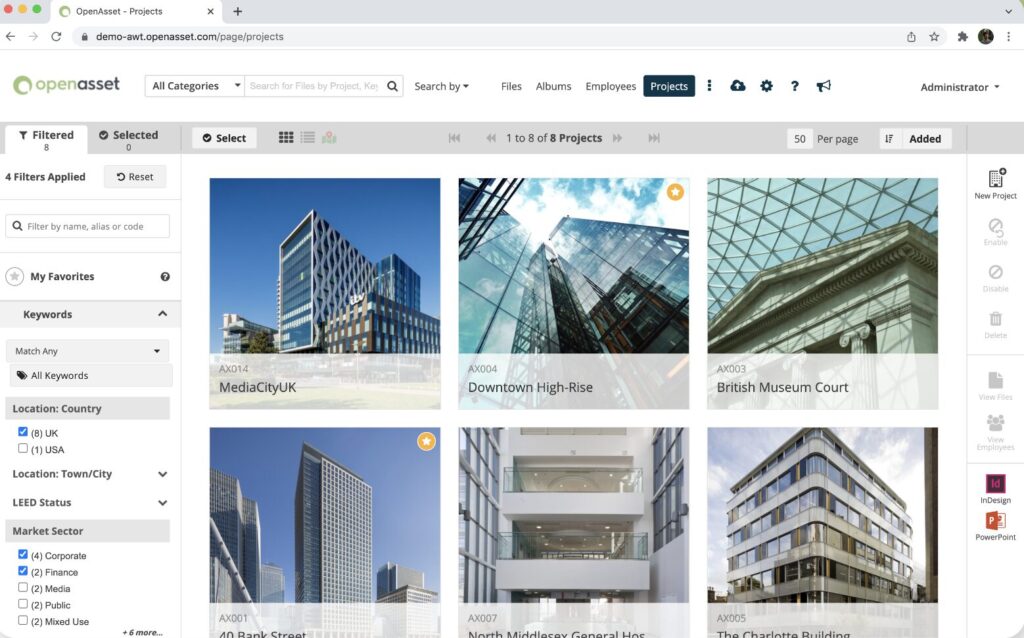
This means it offers capabilities that are particularly beneficial in enhancing the efficiency and effectiveness of AEC proposal creation. To name a few of these capabilities, they include:
- A centralized repository
- Customizable templates
- An Employee Module
- Integration with AEC-specific tools
- Easy sharing and collaboration
FAQs: Responding to Civil Engineering RFPs
Here are some common FAQs to help you throughout your civil engineering proposal process:
Do Civil Engineers Write Proposal Responses?
Yes, civil engineers often write proposal responses, especially in firms where they play a pivotal role in project planning and execution. These professionals leverage their technical expertise and understanding of project requirements to craft detailed proposals that address the scope, methodology, and execution plan.
However, typically in larger organizations, a team that includes civil engineers along with the firm’s marketing team and a dedicated proposal writer/s may collaborate to prepare the response, ensuring that it has all the right content and meets the RFP’s requirements.
What’s the Best Way to Structure a Civil Engineering Proposal?
The best way to structure your civil engineering proposal is to include:
- An Executive Summary/ Introduction
- Project background
- Team qualifications
- Detailed project plan
What Mistakes Should I Avoid in Civil Engineer Proposals?
Knowing what to do when crafting your civil engineering proposals is just as important as knowing what not to do. Some common mistakes to avoid include:
- Underestimating the importance of clarity and detail, particularly in explaining technical approaches and methodologies
- Overlooking the need to tailor the proposal to the specific client and their project
- Failing to justify the budget and timeline
- Not doing enough proofreading
- Failure to highlight the team’s qualifications and past successes
These mistakes can raise concerns about project feasibility and reliability and might undermine the proposal’s persuasiveness. Avoiding these pitfalls can significantly increase the chances of your proposal being successful.
Civil Engineering Proposal Example
At OpenAsset, our goal is to equip you with the tools necessary for achieving success. To support you on this path, we offer an engineering project proposal template that can be used for your civil engineering proposals. It’s designed to enhance your proposal crafting process.
Additionally, you can see an example of what a civil engineering proposal should look like below:
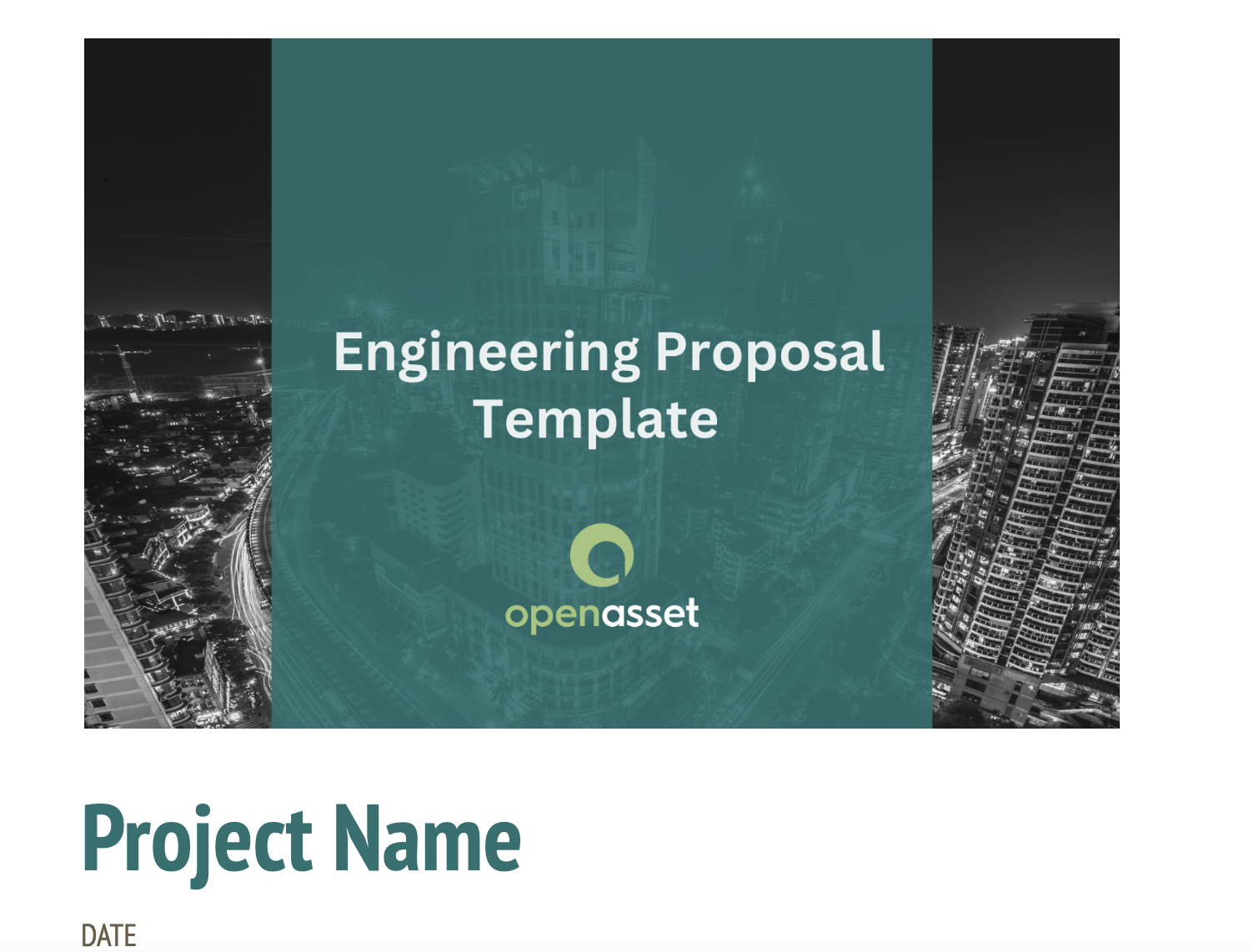
Create Successful Civil Engineering Proposals With OpenAsset
OpenAsset , a leading Digital Asset Management (DAM) solution designed specifically for the architecture, engineering, and construction industries, offers a robust platform that simplifies the proposal creation process, enabling you to produce compelling, comprehensive proposals with ease.
Implementing OpenAsset into your proposal development workflow gives you access to a suite of features that streamline the management of digital assets, automate document creation, and ensure your proposals are both visually appealing and rich in content.
This not only saves valuable time but also enhances the quality of your submissions, allowing your projects’ strengths and your team’s expertise to stand out.
Ultimately, OpenAsset’s DAM solution makes AEC proposals simpler, faster, and more successful. That’s why 99% of customers renew. With OpenAsset, your journey towards creating winning civil engineering proposals is just a few clicks away.
Ready to streamline your workflows?
[Closing CTA: Schedule a Demo]
Get OpenAsset DAM Insights

How to Create Winning Proposals
What to read next.
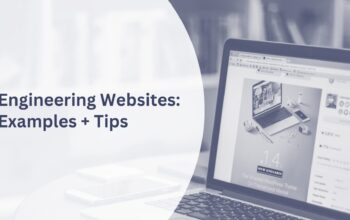
Engineering Websites: 10 Web Design Tips + 30 Examples
For those passionate about engineering and looking to draw more clients to their firm, a website is undoubtedly the top tool for marketing. ...
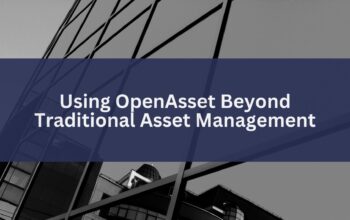
5 Inspiring Ideas for Using OpenAsset Beyond Traditional Asset Management
As a digital asset management (DAM) solution, OpenAsset has established itself as a leader for AEC professionals wanting to streamline their...

Building the Future: How AI is Transforming the AEC Industry
The architecture, engineering, and construction (AEC) industry stands on the brink of a revolutionary shift, powered by artificial intellige...
ScholarWorks
Home > Engineering > Civil Engineering > CIVILENG_GRADPROJ
Civil Engineering Graduate Projects and Theses
Theses/dissertations from 2023 2023.
Analyzing the Effects of Rejuvenators in Balanced Mix Design with High Percentages of Recycled Asphalt Pavement , Amanda Jo Mullins
Theses/Dissertations from 2022 2022
Contaminants of Emerging Concern Behavior within Water Renewal Facilities , Joshua C. Baker
Evaluation of Energy Release from Wildfires Across the Elevation Gradient , Isabelle Rose Butler
Use of Harsh-Braking Data from Connected Vehicles as a Surrogate Safety Measure , Nathaniel Patrick Edelmann
Innovative Foundation Alternative Inspired from Tree Roots , Macie Larranaga
Multivariate Analysis of the 2021 Boise Drought in the Context of Natural Human Systems , Jesus Martinez-Osario
Using Food-Industry Byproduct to Treat Expansive Clay , Nicole L. Shaw
Theses/Dissertations from 2021 2021
Developing Implementable Policies Targeting Sustainable Building Construction Through International Policy Diffusion , Melisa Ciara Hancock
Using Differential Shear Strain Measurements to Monitor Crosstie Support Conditions in Railroad Tracks , D. Kody Johnson
Water Quality Responses to a Semi-Arid Beaver Meadow in Boise, Idaho , Luise Bayer Winslow
Theses/Dissertations from 2020 2020
Quantifying the Effects of Climate Change on Pavement Performance Prediction using AASHTOWare Pavement ME Design , Md Shahjalal Chowdhury
In-situ Fluid Injections to Achieve Bio-Stimulated Calcite Precipitation in Expansive Soils , Anish Pathak
Understanding Mesoscopic Chemo-Mechanical Distress and Mitigation Mechanisms of Concrete Subject to ASR , Md Asif Rahman
Assessing the Prevalence of Suspicious Activities in Asphalt Pavement Construction Using Algorithmic Logics and Machine Learning , Mostofa Najmus Sakib
Theses/Dissertations from 2019 2019
Wildfire Smoke: Trends, Challenges, Unknowns, and Human Response , Mariah Dawn Fowler
Full-Scale Study of Infrared Thermography for Assessing Surface and Subsurface Defects in Pavements and Other Civil Infrastructure , Aidin J. Golrokh
Exploring the Use of Data from Newer Technologies in Road Design , Mahamudul Hasan
Effect of Subgrade Conditions on Pavement Analysis and Performance Prediction: A Study for Idaho Conditions , Md Jibon
A Unified Risk-Based Framework for Assessing Sustainability and Resiliency of Civil Infrastructure , Thomas Adam Robbins
Theses/Dissertations from 2018 2018
Feasibility of Aerial Tramway at Boise State University , Majed Alsaqyani
Predicting Power Transformer Bushings' Seismic Vulnerability , Jonathan Bender
Effect of Particle Breakage on Ballast Permanent Deformation — A Study Using the Discrete Element Method , Beema Dahal
Machine Learning Methods to Map Stabilizer Effectiveness Based on Common Soil Properties , Amit Gajurel
Physio-Chemical Degradation of Concrete: A Ramification of Coupled Freeze-Thaw and Sulfate Attack , MD Aminul Islam
Studying the Applicability of Biostimulated Calcite Precipitation in Stabilizing Expansive Soils , Md Touhidul Islam
Effect of Subsurface Conditions on Flexible Pavement Behavior: Non-Destructive Testing and Mechanistic Analysis , Md. Fazle Rabbi
Studying the Use of Microbial Induced Calcite Precipitation as a Shallow Stabilization Alternative to Treat Expansive Soils , Tasria Rahman
Theses/Dissertations from 2017 2017
Subsurface Characterization of Flexible Pavements Constructed Over Expansive Soil Subgrades and Selection of Suitable Rehabilitation Alternatives , Kazi Moinul Islam
Effect of Particle Size Distribution and Packing Characteristics on Railroad Ballast Shear Strength: A Numerical Study Using the Discrete Element Method , S. M. Naziur Mahmud
Evaluating the Effectiveness of a Hybrid Geosynthetic Reinforcement System to Mitigate Differential Heave on Flexible Pavement due to Expansive Subgrades , Mir Md. Tamim
Theses/Dissertations from 2016 2016
Electromagnetically Induced Alteration of Hydraulic Conductivity of Coarse-Grained Soils for Geotechnical Applications , Rakesh Acharya
Evaluating the Suitability of Microbial Induced Calcite Precipitation Technique for Stabilizing Expansive Soils , Sikha Neupane
Evaluating the Effects of Major Assumptions in Layered Elastic Theory on Railroad Track Response Prediction Through the Development of an Improved Track Analysis Software , Sadichchha Sharma
Coupled Numerical Analysis of Variations in the Capacity of an Energy Pile in Clay Soil , Daniel Patrick Zimmerman
Theses/Dissertations from 2015 2015
Impedance-Based Water-Quality Monitoring Using Parallel Plate Method , Ali Nazaridaftari
Theses/Dissertations from 2014 2014
Electromagnetically Induced Remediation of Contaminated Soil , Vahab Bolvardi
The Effect of Electromagnetic Waves on Airflow During Air Sparging , Somayeh Najafi
Dual-State Kalman Filter Forecasting and Control Theory Applications for Proactive Ramp Metering , Brian Richard Portugais
Theses/Dissertations from 2013 2013
Investigation of Human-Induced Land Use Changes Under Present and Future Climate Projections in Southern Idaho , Korri Allen Anderson
Electromagnetic Alteration of Hydraulic Conductivity of Soils , Sahba Azad
An Investigation into the Water Budget and the Management of the Snake River System , John Whitney Hildreth
A New Framework for Flooding Control in Regulated River Systems , Elizabeth Akemi Kanashiro
Theses/Dissertations from 2012 2012
Analysis of Electromagnetic Stimulation of Transport in Water for Geoenvironmental Applications , Mahsa Azad
Theses/Dissertations from 2011 2011
A System Dynamics Approach for Climate Change Impact Analysis in the Snake River Basin , David Jerome Hoekema
Assessing the Surface Energy Balance Components in the Snake River Basin , W Thilini Ajanthik Jaksa
Investigation of Concrete Sealer Products to Extend Concrete Pavement Life , Justin Nielsen
EM Stimulation of Water for Geotechnical Applications , Harlan Dwight Olson Sangrey
Laser Particulate Counter Calibration to a Micro-Orifice Uniform-Deposit Impactor , Benjamen Fredrich Seely
Theses/Dissertations from 2010 2010
Impact of Ground-level Aviation Emissions on Air Quality in the Western United States , Eric Edward Clark
Factors Influencing Soil Moisture at the Hillslope Scale in a Semi-Arid Mountainous Environment , Ivan John Geroy
Identifying Controls on Surface Carbon Dioxide Efflux in a Semi-Arid Ecosystem , Katrina Elsie Ladd
Pharmaceuticals and Personal Care Products in Ground Water from Municipal Lagoon Treatment , Teresa Nicholas
Theses/Dissertations from 2007 2007
Design and Validation of an Automated Multistep Outflow Apparatus for Measuring Soil Hydraulic Properties , Jordi Figueras
Theses/Dissertations from 2006 2006
Integrated Transportation and Land Use Modeling for the Boise Metropolitan Area , Suseel Dev Indrakanti
A Gas Sampling Module for a Subsurface Ion Mobility Spectrometer , Kevin P. Ryan
Theses/Dissertations from 2005 2005
Development of a Queue Growth and Dissipation Model , Wei Wang
Theses/Dissertations from 2002 2002
Changes in Local Groundwater Elevation Following Stream Restoration in the Lower Red River Meadow, Idaho , Kenneth Douglas Donley
- Collections
- Disciplines
- SelectedWorks Gallery
- Albertsons Library
- Division of Research
- Graduate College
Advanced Search
- Notify me via email or RSS
Author Corner
Home | About | FAQ | My Account | Accessibility Statement
Privacy Copyright
Academia.edu no longer supports Internet Explorer.
To browse Academia.edu and the wider internet faster and more securely, please take a few seconds to upgrade your browser .
Enter the email address you signed up with and we'll email you a reset link.
- We're Hiring!
- Help Center

Research Proposal For 2017 PhD Civil 01 Shakeel

Related Papers
Bharathi Murugan
Recycling granulated waste tires (crumb rubber) has been widely studied for the last twenty years mostly relating to applications such as asphalt pavement, waterproofing system, membrane liners, etc., Use of alternative material in concrete opens a whole new range of possibilities in the construction industry. Sustainable technologies for concrete construction are not only essential for the development of eco friendly construction but also to manage huge quantity of solid waste disposal without compromising durability. In this study, the use of crumb rubber to replace fine aggregates in concrete was studied. It is believed that concrete acting as a binder mixed with crumb rubber can make concrete more flexible and thus, provide softness to the surface. The objective of this paper is to investigate the mechanical properties of concrete when crumb rubber is used as partial replacement of fine aggregate in different percentage (5%, 10%, 15%, 20% and 25%) by volume. Laboratory trials we...
International Journal of Engineering Research and Technology (IJERT)
IJERT Journal
https://www.ijert.org/a-study-on-rubberized-concrete https://www.ijert.org/research/a-study-on-rubberized-concrete-IJERTV9IS090502.pdf The use of scrap tyre rubber in the preparation of concrete has been thought as an alternative disposal of such waste to protect the environment. In this study an attempt has been made to identify the various properties necessary for the design of concrete mix with the coarse tyre rubber chips as aggregate in a systematic manner. In the present experimental investigation, the M25 grade concrete has been chosen as the reference concrete specimen. Scrap tyre rubber chips, has been used as coarse aggregate with the replacement of conventional coarse aggregate Concrete is one of the most popular building materials. The construction industry is always increases its uses and applications. Therefore, it is required to find alternative materials to reduce the cost of concrete. On the other hand, Non-biodegradable waste i.e. water bottles, cool drink bottles and disposable glasses, shredded or crumbed rubber etc., is creating a lot of problems in the environment and its disposal becoming a great difficulty. The objective of this paper is to investigate the use of rubber pieces as coarse aggregate in the concrete. Concrete tested with varying percentages of rubber from 0 to 15% of normal aggregates. Compressive strength, of concrete is measured and comparative analysis is made.
International Journal of Innovations in Engineering and Science
Swapnil Malipatil
Nepal, along with the whole world facing a big environmental issue of non-degradable rubber Tyre (crumb rubber). Department of Transport Management (DoTM) Nepal, (2014) has said that number of vehicles registered in the country has reached 2,551,138 units and rubber Tyre which cannot be discharged off-easily in the environment as its decomposition takes much time and burning produces air pollution with emission of carbon monoxide and the ash produced from burning material that contains plastic and rubber could be hazardous. In such a case, reuse of rubber wastes would be better choice. Paper works on the reuse of rubber in concrete as a fine and coarse aggregate in proportion in the concrete. Different index properties like dry weight , thermal conductivity , Compressive strength, tensile strength are investigated and compared with ordinary concrete’s above mentioned properties.Better bonding between the molecules of rubber and cement in the mix is established with the use of NaOH s...
International Research Group - IJET JOURNAL
Matteo Sarasso
Since waste tires constitute a serious environmental concern, several studies are devoted to the use of finely divided recycled rubber for the production of rubberized concrete by partial substitution of the mineral aggregate fraction. The introduction of rubber into concrete presents several advantages (e.g., improvement of toughness and thermal/electrical/acoustic insulation capacities). Unfortunately, the addition of a high content of rubber into concrete causes an important loss of mechanical resistance of the final composite. In this context, several scientific studies are devoted to investigate the best technical solutions for favoring the interfacial adhesion between rubber and cement paste, but the interpretation of the literature is often misleading. To overcome this issue, the metadata extrapolated from the single scientific works were critically re-analyzed, forming reference diagrams where the variability fields of the different rubber concrete formulations (in terms of ...
Case Studies in Construction Materials
najib gerges
Sachin Dass
The disposal of used tires is a major environmental problem throughout the world which causes environmental hazards. Crumb rubber is a waste material that is ideal for use in concrete applications. The aim of this study is achieved to use of rubber waste as partial replacement of fine aggregate to produce rubberize concrete in M30 mix. Different partial replacements of crumb rubber (0, 5, 10, 15 and 20%) by volume of fine aggregate are cast and test for compressive strength, flexural strength, split tensile strength and stress-strain behavior. The results showed that there is a reduction in all type of strength for crumb rubber mixture, but slump values increase as the crumb rubber content increase from 0% to 20%. Meaning that crumb rubber mixture is more workable compare to normal concrete and also it is useful in making light weight concrete. It is recommended to use the rubberized concrete for non structural applications.
isara solutions
Interal Res journa Managt Sci Tech
In Construction industry, concrete is mostly used in world-wise as construction materials and about 12.5 billion tons of natural resources are used to make the concrete. Many scientists and researchers are trying to find alternate construction materials, which are environmentally friendly and contribute towards sustainable development or green construction. Use of rubber as an alternate additive to the conventional concrete mix could be the huge step ahead. The quantity of rubber wastes is being generated rapidly day by day, so dramatically that it has ringed an alarm to the disposal problems as well as the harm environment could go through such huge non-biodegradable product. Hence, using scrap tyres crumb in concrete is a technical need and needed for mother nature; the modified crumb rubber concrete is considered a light- weight alternate to conventional concrete. The objective of this study is to determine the strength behavior of crumb rubber concrete which is in powder form.
International Journal of Latest Research in Engineering and Technology
IJLRET Journal
The use of scrap tyre rubber in the preparation of concrete has been thought as an alternative disposal of such waste to protect the environment. In this study an attempt has been made to identify the various properties necessary for the design of concrete mix with the coarse tyre rubber chips as aggregate in a systematic manner. In the present experimental investigation, the M20 grade concrete has been chosen as the reference concrete specimen. Scrap tyre rubber chips, has been used as coarse aggregate with the replacement of conventional coarse aggregate Concrete is one of the most popular building materials. The construction industry is always increases its uses and applications. Therefore, it is required to find alternative materials to reduce the cost of concrete. On the other hand, Non-biodegradable waste i.e. water bottles, cool drink bottles and disposable glasses, shredded or crumbed rubber etc., is creating a lot of problems in the environment and its disposal becoming a great difficulty. The objective of this paper is to investigate the use of rubber pieces as coarse aggregate in the concrete. Concrete tested with varying percentages of rubber from 0 to 15% of normal aggregates. Compressive strength, of concrete is measured and comparative analysis is made.
RELATED PAPERS
PRINCIPLES OF KNOWLEDGE REPRESENTATION AND REASONING-INTERNATIONAL CONFERENCE-
Deborah L. McGuinness
The Journal of Environment & Development
Mark Svoboda
Saúde em Debate
Alzira De Oliveira Jorge
Applied Catalysis
Lilia Andronache
Gebeyaw Biset
Journal of Allergy
Reza VARASTEH
Marios Kyriacou
Journal of Alloys and Compounds
Thabsile Thabethe
Gelson Silva
International Journal of Management and Decision Making
Kate Waghorn
Asian Review of Social Sciences
International Journal of Computational Methods
Journal of Biomolecular Structure and Dynamics
Pragya Tiwari
Journal of Biological Chemistry
Sarah Bergeron
Oceanography
Michael S Tomlinson
IEEE Transactions on Knowledge and Data Engineering
Amarnath Gupta
2015 IEEE International Conference on Acoustics, Speech and Signal Processing (ICASSP)
Philippe Salembier
transcript Verlag eBooks
Diane Kolin
Památky archeologické
Zdeněk Vaněček
Artkarel.com
Karel Vereycken
Journal of Techniques
Raghad Hameed
See More Documents Like This
- We're Hiring!
- Help Center
- Find new research papers in:
- Health Sciences
- Earth Sciences
- Cognitive Science
- Mathematics
- Computer Science
- Academia ©2024
An official website of the United States government
Here's how you know
Official websites use .gov A .gov website belongs to an official government organization in the United States.
Secure .gov websites use HTTPS. A lock ( Lock Locked padlock ) or https:// means you've safely connected to the .gov website. Share sensitive information only on official, secure websites.

Engineering for Civil Infrastructure (ECI)
Important information for proposers.
All proposals must be submitted in accordance with the requirements specified in this funding opportunity and in the NSF Proposal & Award Policies & Procedures Guide (PAPPG) that is in effect for the relevant due date to which the proposal is being submitted. It is the responsibility of the proposer to ensure that the proposal meets these requirements. Submitting a proposal prior to a specified deadline does not negate this requirement.
Supports fundamental research in infrastructure materials and architectural, geotechnical and structural engineering. Focus areas include geomaterials and geostructures, structural materials, structural and non-structural systems, and building envelopes.
The Engineering for Civil Infrastructure (ECI) program supports fundamental research in geotechnical, structural, materials, architectural, and coastal engineering. The ECI program promotes research that can shape the future of the nation’s physical civil infrastructure and that can contribute to climate change adaptation and mitigation, and hazards and disaster resilience. Types of civil infrastructure that the ECI program considers include, but are not limited to, buildings, residential construction, earth and earth retaining structures, and components of flood protection systems; water, waste disposal, and wastewater systems; energy infrastructure (excluding nuclear); and transportation systems (excluding pavements). Both disciplinary and convergent research that can address the challenges of physical civil infrastructure to be resilient and sustainable over its service lifetime are of particular interest. Broader impacts of ECI research include fostering community welfare for an equitable and prosperous nation and promoting environmentally friendly, circular economy policies.
The ECI program supports research that advances knowledge on the behavior of physical civil infrastructure subjected to and interacting with the natural environment during construction; under service and long-term conditions, including increased demands due to climate change adaptation and other emerging stressors; and under conditions caused by single or multiple extreme hazard events (extreme weather, windstorms, earthquakes, tsunamis, storm surges, landslides, and fire, including wildland-urban interface fire). The ECI program also supports research on geomaterials and infrastructure materials utilized in load-bearing systems as well as in non-structural systems. Of particular interest is experimental and analytical/computational research to advance the fundamental understanding of coupled multi-physics, multi-scale (spatial and temporal), multi-functional behavior of these materials and their intended use in civil infrastructure.
The ECI program supports research on civil infrastructure that contributes to the National Science Foundation’s role in the National Earthquake Hazards Reduction Program (NEHRP) and the National Windstorm Impact Reduction Program (NWIRP). Principal Investigators are encouraged to leverage NSF’s investments in the Natural Hazards Engineering Research Infrastructure (NHERI) experimental, computational modeling and simulation, and data resources ( https://www.designsafe-ci.org/ ) in their research to accelerate advances needed for reducing the impacts of natural hazards on civil infrastructure. The NHERI Science Plan ( https://www.designsafe-ci.org/facilities/nco/science-plan/ ) offers a range of research topics that could benefit from the use of NHERI resources and are relevant to the ECI program.
The ECI program does not support research that addresses natural resource exploration or recovery, investigates blasts and explosions, develops sensor and measurement technologies, or focuses on hazard characterization. The ECI program only supports fundamental research topics for civil infrastructure with a strong grounding in theory. Topics which fall within the mission for research and/or development of other federal and state agencies are appropriate for the ECI program only when addressing fundamental scientific questions. Research on natural hazard characterization is supported through programs in the NSF Directorate for Geosciences.
Proposers are actively encouraged to email a one-page project summary to the ECI Program Officers before submitting a full proposal for guidance on whether the proposed research topic falls within the scope of the ECI program; this guidance especially should be requested for multi-disciplinary research proposals, proposals for which research and/or development on the subject civil infrastructure(s) are also supported by other federal and state agencies, and proposals that consider civil infrastructure not listed above.
Program contacts
Program events.
- May 21, 2024 - Engineering for Civil Infrastructure (ECI) Office Hours
- June 18, 2024 - Engineering for Civil Infrastructure (ECI) Office Hours
- May 31, 2023 - Engineering for Civil Infrastructure (ECI) Office Hours
- May 4, 2023 - CiviL Infrastructure research for climate change Mitigation and…
- May 10, 2022 - Engineering for Civil Infrastructure Webinar
- May 11, 2020 - Engineering for Civil Infrastructure Webinar
Additional program resources
- NSF's 10 Big Ideas
- Research Experience for Undergraduates
Awards made through this program
Related programs.
- Leading Engineering for America's Prosperity, Health, and Infrastructure (LEAP HI)
Organization(s)
- Directorate for Engineering (ENG)
- Division of Civil, Mechanical and Manufacturing Innovation (ENG/CMMI)
Engineering Proposals
Consulting engineers aren't the only engineers who write proposals. For instance, in academia, engineers write proposals to receive funding for their research or even to initiate a project. Some engineers produce proposals to be read and approved by management while others send proposals to specific funding agencies or clients.
Definition of Proposals
A proposal is a description of the work you will complete on a project. The details included in a proposal depend on the project's scope and who will read the document. Typically, organizations advertise a need for proposalsand consulting engineers respond to the need. However, as an engineer, you may determine that a problem exists, and therefore, propose solutions to an organization. In this case, you must first convince the agency that the problem exists before proposing your solutions.
Types of Proposals
Different types of proposals are necessary for different projects. In academia, engineers produce grant proposals or research proposals in order to receive funding from government agencies and non-profit organizations. In industry, engineers, especially consultants, write proposals or "bids." Engineers produce these proposals for the company where they are working or for other organizations.
A proposal's audience is those supporting the proposed project. The details you provide in a proposal may change, depending on your audience. For instance, if you submit a Proposal to your company's management, you may not have to include project costs or other background information. On the other hand, if you produce a proposal for an organization outside your company, you may need to provide more details. These details might include a rationale for why they should fund your project, as well as the necessary materials and costs. Before writing a proposal, you should always research your audience's background. This way, you will have a better idea about what information to include in your proposal.
General Format
You can submit a proposal in several ways, depending on your audience. For example, proposing a project to your supervisor may require a phone call or a quick e-mail. Or, you may write a short memo, outlining your ideas. On the other hand, you may have to produce a lengthy proposal that provides project background and completely describes the proposed work. Typically, you will know which format to use based on the proposal's context.
When you write a lengthy proposal, you will have to spend time conducting research before you begin writing. This research might include locating other designs and theories to refer to as examples or to critique. A proposal might also include graphics to help an audience visualize your ideas. You might incorporate other data, such as dollar figures and time schedules, so your audience knows exactly how long the project will take to complete and much it will cost them To read more, choose any of the items below:
Introduction
In the proposal's Introduction, you should provide information about the need for a proposal. In other words, here is where you state why you are writing the proposal in the first place. You should also provide an overview of what the rest of the proposal includes.
Qualifications
In the Qualifications section, you should show that you and your organization (if applicable) are skilled and capable of completing the proposed work successfully. You should view this section as a "resume" since in it, you will depict your skills and experiences. If your audience is your supervisor or other managing decision-makers, then you may not need to include this section.
In the Background section, you should depict the problem/situation that lead to your writing a proposal. Here, you should show that you thoroughly understand the problem. If your audience already knows the Background, you may not need to include this section. For example, your supervisor or other managing decision-makers may already be familiar with the specific problem. Therefore, you don't need to tell them what they already know.
Work Schedule
The Work Schedule section does exactly what its name implies: It presents the time frame in which you will complete the proposed work. This section informs your audience of what to expect from you and when. It also helps to keep you organized. If, after you begin working, you are unable to keep this schedule, you should always communicate changes in deadlines to the appropriate people.
Proposal Statement
In the Proposal Statement section, you should inform your audience of exactly what you are proposing. You should also include what you aren't proposing. For example, if you are proposing partial work on a project, state this and then verify what your work will not include.
In the Cost section, you should present what costs you anticipate your project will involve. To do this, divide your expenses into categories and provide dollar figures. For example, labor costs for each worker, materials, etc. Then, you might provide a total cost.
In the Results section, you should discuss the outcome of your proposal. The types of outcomes resulting from a proposal cover a wide range. For example, you may be creating a design, building an actual construction, or even producing a lengthy report. Be sure to state exactly what the Results will be.
The Conclusion section is similar to the ending of a cover letter. Here, you should summarize why you should be considered and how you can be contacted. You might also reiterate why you are the best person or group for the project.
Methodology
In the Methodology section, you should present how you will complete the project's work. This is similar to a Lab Report's Procedures section in that you have to discuss the steps you will have taken to reach a final goal.
Perspectives on Proposals
Dave alciatore, mechanical engineering.
Internal Proposals
"You're likely to write internal proposals if you work with a product development group in a big company. For example, you might conduct research on possible new product lines. Then, you would write a proposal to communicate that you want to pursue this product, but that it will involve testing and development. In other words, it's going to cost money. In order to get financial support, you have to write a proposal that presents your plans. This includes the benefits of the product in terms of profit."
Tom Siller, Civil Engineering
Consulting Engineers
"If you are a consulting engineer, you will work in a very competitive environment because you have to sell your services. In order to get work on a project, you have to submit a proposal or give a presentation. To do this successfully, you have to know who your client is and what that client expects."
John Mahan, Electrical Engineering
Proposal Types
"Engineers write many different types of proposals. Sometimes, a proposal has to be powerful and business-oriented. Many companies don't want to look too far into the future, not even past two years. So, you have to be very specific and down to earth. You have to tell them when exactly you will complete the work. In Phase One, you'll do x. In Phase Two, you'll do y. You should also include the benefits gained during each phase."
Citation Information
Dawn Kowalski. (1994-2024). Engineering Proposals. The WAC Clearinghouse. Colorado State University. Available at https://wac.colostate.edu/repository/writing/guides/.
Copyright Information
Copyright © 1994-2024 Colorado State University and/or this site's authors, developers, and contributors . Some material displayed on this site is used with permission.
- Interesting
- Scholarships
- UGC-CARE Journals
Top 50 Research Ideas in Civil Engineering
Top 100 Research and Project Ideas in Civil Engineering

Table of contents
Top 50 research and project ideas in civil engineering.
Civil engineering is a broad field that requires constant research to improve infrastructure and environmental sustainability. Research ideas in civil engineering can help civil engineers optimize their websites to rank higher on search engine results pages (SERPs) and increase visibility to potential clients. In this article, ilovephd listed the top 50 project and research ideas in civil engineering
Here are the top 100 Research ideas in civil engineering:
- Optimization of building information modeling (BIM) for search engines
- Analyzing the effects of traffic on urban air quality
- Evaluating the feasibility of green infrastructure for stormwater management
- Developing sustainable construction techniques for high-rise buildings
- Investigating the effects of climate change on transportation infrastructure
- Analyzing the impacts of natural disasters on infrastructure and the environment
- Developing strategies for recycling construction waste
- Studying the effects of urbanization on biodiversity
- Investigating the role of geotechnical engineering in infrastructure development
- Evaluating the effectiveness of public transportation systems in reducing carbon emissions
- Developing sustainable solutions for wastewater treatment
- Analyzing the effects of water scarcity on infrastructure and the environment
- Investigating the use of renewable energy sources in construction
- Developing methods for reducing noise pollution from infrastructure
- Studying the effects of soil erosion on infrastructure and the environment
- Investigating the use of artificial intelligence (AI) in civil engineering
- Evaluating the feasibility of using drones in construction
- Developing sustainable solutions for pavement design and maintenance
- Analyzing the effects of natural disasters on transportation infrastructure
- Investigating the effects of climate change on water resources
- Developing strategies for improving public perception of civil engineering
- Studying the effects of green roofs on energy efficiency and air quality
- Investigating the use of nanotechnology in civil engineering
- Evaluating the Effectiveness of bridge maintenance strategies
- Developing sustainable solutions for coastal infrastructure
- Analyzing the impacts of construction on nearby communities
- Investigating the use of virtual reality (VR) in civil engineering
- Evaluating the feasibility of using robots in construction
- Developing sustainable solutions for road construction and maintenance
- Studying the effects of land use on transportation infrastructure
- Investigating the effects of land subsidence on infrastructure and the environment
- Developing strategies for improving infrastructure resilience to natural disasters
- Analyzing the effects of climate change on infrastructure materials
- Investigating the use of big data in civil engineering
- Evaluating the effectiveness of sustainable drainage systems (SuDS)
- Developing sustainable solutions for landfill design and management
- Studying the effects of water quality on infrastructure and the environment
- Investigating the Use of blockchain technology in civil engineering
- Evaluating the feasibility of using 3D printing in construction
- Developing sustainable solutions for airport design and management
- Analyzing the effects of seismic activity on infrastructure and the environment
- Investigating the use of augmented reality (AR) in civil engineering
- Evaluating the Effectiveness of sustainable transportation infrastructure
- Developing strategies for improving infrastructure cybersecurity
- Studying the effects of noise barriers on nearby communities
- Investigating the Effects of climate change on coastal infrastructure
- Developing sustainable solutions for railway design and management
- Analyzing the impacts of infrastructure on local economies
- Investigating the use of machine learning (ML) in civil engineering
- Evaluating the feasibility of using prefabrication in construction
In conclusion, The top 50 research ideas in civil engineering cover a broad range of topics, including sustainable construction, green infrastructure, and the use of technology in civil engineering. By incorporating these research ideas into their digital marketing strategy, civil engineers can improve their website’s search engine rankings and reach a wider audience.
Ultimately, the research ideas in civil engineering can help drive innovation and progress in the field toward a more sustainable and resilient future.
Hope, this article would help you know about the research and project ideas and topics in civil engieering. Happy Researching!
- 3D Printing
- airport design
- artificial intelligence
- augmented reality
- biodiversity
- blockchain technology
- civil engineering
- climate change
- coastal infrastructure
- construction waste
- cybersecurity
- geotechnical engineering
- green infrastructure
- high-rise buildings
- infrastructure resilience
- land subsidence
- landfill design
- Machine Learning
- natural disasters
- noise barriers
- noise pollution
- pavement design
- public transportation
- railway design
- renewable energy
- Research Ideas
- seismic activity
- soil erosion
- stormwater management
- sustainable construction
- sustainable transportation
- urban air quality
- wastewater treatment
- water quality
- water scarcity
Top 20 Peer-Reviewed Journals in Biomedical Technology
How to download free ieee dataset – 2024, email subscription.

iLovePhD is a research education website to know updated research-related information. It helps researchers to find top journals for publishing research articles and get an easy manual for research tools. The main aim of this website is to help Ph.D. scholars who are working in various domains to get more valuable ideas to carry out their research. Learn the current groundbreaking research activities around the world, love the process of getting a Ph.D.
WhatsApp Channel
Join iLovePhD WhatsApp Channel Now!
Contact us: [email protected]
Copyright © 2019-2024 - iLovePhD
- Artificial intelligence
Civil Engineering Research Proposal Topics
Civil engineering is the engineering in the sphere of building construction, which embraces all the stages of the embodiment of the building projects: projecting, constructing and exploitation of the objects. In the narrower meaning civil engineering is the complex of the engineering and consulting services in the planning, constructing and exploitation of the industrial, infrastructural and other objects.
Essay Example on Thesis Proposal Civil Engineering
The history of civil engineering starts from the 12th century with the development of the weapon and military constructions.
The military engineers constructed machines which helped in the war.
The first mentioning about the civil engineers appeared in Holland in the 16th century. These people were involved in the construction of bridges and roads, and their service differed from the military engineers. Since this time the term civil engineering has been spread all over the world and meant the projecting and construction of the objects of the mass public use.
The process of civil engineering is divided into several major stages: the initial stage of projecting, investment, constructing, exploitation and utilization.
Civil engineering is an extremely broad issue and it touches upon numerous branches of the human life. For example, it is connected with the construction of the industrial objects, private houses (urban engineering), construction of roads, transportation (the public transport and its lines), water resource engineering (pipelines which are aimed to supply people with water), earthquake engineering (the means which are helpful in the prevention and reduction of the result of an earthquake), etc. Civil engineering is an extremely varied branch of engineering and it can be called the primary factor which effects the quality of life in the urban areas.

Proficient in: Civil Engineering
“ Very organized ,I enjoyed and Loved every bit of our professional interaction ”
Civil engineering is quite a useful topic for the research and the student is able to observe the issue deeper and suggest his own concepts and strategies of the development and improvement of the certain branches of civil engineering. The student is obliged to dwell on the explanation of the purpose of the research, presentation of the problems which disturb him, the ways of the solution of the problems and the selection of the methods of the research. In addition, the student is supposed to share the expectations concerning the topic of civil engineering and the evaluation of the urgency of the issue.
The aim of the student is to prove that the chosen topic on civil engineering is worth attention. The Internet and a free research proposal civil engineering example can help the young person with the professional composition of the text. Relying on the intensive help of a free research proposal sample civil engineering the student will manage to solve the problem of formatting, the right research of the problem and master the convincing tone of writing.
At EssayLib.com writing service you can order a custom research proposal on Civil Engineering topics. Your proposal will be written from scratch. We hire top-rated PhD and Master’s writers only to provide students with professional research proposal help at affordable rates. Each customer will get a non-plagiarized paper with timely delivery. Just visit our website and fill in the order form with all proposal details:
Enjoy our professional research proposal writing service!
Cite this page
Civil Engineering Research Proposal Topics. (2019, Nov 27). Retrieved from https://paperap.com/paper-on-civil-engineering-research-proposal/
"Civil Engineering Research Proposal Topics." PaperAp.com , 27 Nov 2019, https://paperap.com/paper-on-civil-engineering-research-proposal/
PaperAp.com. (2019). Civil Engineering Research Proposal Topics . [Online]. Available at: https://paperap.com/paper-on-civil-engineering-research-proposal/ [Accessed: 9 Apr. 2024]
"Civil Engineering Research Proposal Topics." PaperAp.com, Nov 27, 2019. Accessed April 9, 2024. https://paperap.com/paper-on-civil-engineering-research-proposal/
"Civil Engineering Research Proposal Topics," PaperAp.com , 27-Nov-2019. [Online]. Available: https://paperap.com/paper-on-civil-engineering-research-proposal/. [Accessed: 9-Apr-2024]
PaperAp.com. (2019). Civil Engineering Research Proposal Topics . [Online]. Available at: https://paperap.com/paper-on-civil-engineering-research-proposal/ [Accessed: 9-Apr-2024]
- Physical Education Research Proposal Topics Pages: 2 (580 words)
- Research Proposal Topics In Taxation Pages: 2 (589 words)
- Civil Engineering in the 21st Century Pages: 1 (280 words)
- History Of Civil Engineering Essay Pages: 3 (824 words)
- Report on Civil Engineering Disasters Pages: 8 (2298 words)
- Prevention and mitigation of accidents in civil engineering Pages: 5 (1380 words)
- Civil Rights and Civil Liberties Pages: 3 (753 words)
- Civil Liberties and Civil Rights Pages: 6 (1657 words)
- Civil Law: Online Course Proposal Example Pages: 4 (1024 words)
- Organic Food Research Paper Topics Pages: 2 (572 words)
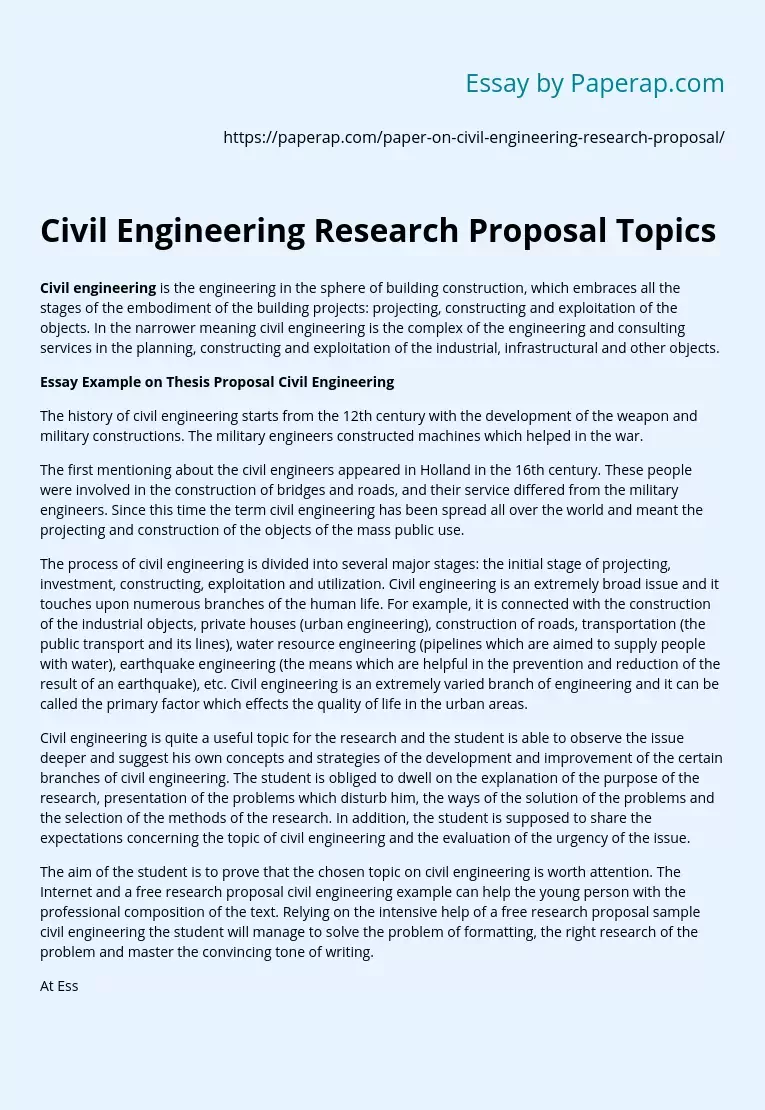
- MyU : For Students, Faculty, and Staff
Innovative Technology for Destruction PFAS “Forever Chemicals”
A Warren Distinguished Lecture with
Timothy J. Strathmann Colorado School of Mines, Department of Civil and Environmental Engineering
Forever No More: Introduction of an Innovative Technology for Destruction PFAS “Forever Chemicals”
Abstract Timothy Strathmann describes the recent invention and development of a new technology for destruction of per- and polyfluoroalkyl substance (PFAS) “forever chemicals” at the Colorado School of Mines. The critical importance of technologies for cost-effective destruction of PFAS is growing due to recent US EPA proposals to designate PFAS as hazardous substances under Comprehensive Environmental Response, Compensation, and Liability Act (CERCLA) and institute strict drinking water regulations. The technology Strathmann and his colleagues invented, H ydrothermal AL kaline T reatment (HALT), applies elevated temperatures (250 – 350°C) to liquid water or wet solid mixtures amended with low-cost alkali (e.g., NaOH) to promote destruction and defluorination of PFAS. HALT is ideal for treating high moisture content wastes (e.g., liquid concentrates, wet soils, biosolids) contaminated with PFAS because input energy requirements are much lower than for competing thermochemical technologies (e.g., incineration, gasification). Strathmann discusses research revealing the underlying mechanisms for PFAS destruction by HALT and recent work demonstrating treatment of the full spectrum of PFAS identified in aqueous film-forming foam (AFFF)-impacted water and soil samples, as well as liquid and solid concentrate wastes derived from other treatment processes (e.g., GAC adsorption, foam fractionation). Strathmann also highlights ongoing efforts to commercialize HALT with their industry partner Aquagga.
Speaker Timothy Strathmann is a Professor in the Department Civil and Environmental Engineering at the Colorado School of Mines. His research aims to develop more sustainable technologies for water treatment and waste valorization. Most recently, his research program has focused on developing innovative technologies for treatment of per- and polyfluoroalkyl substances (PFAS), including being the lead inventor of the hydrothermal alkaline treatment technology for PFAS (HALT-PFAS). Dr. Strathmann is the recipient of a National Science Foundation CAREER Award, and his current research has been sponsored by DoD-SERDP/ESTCP, NSF, and the Semiconductor Research Corporation (SRC). Dr. Strathmann’s formal training includes a Ph.D. in environmental engineering from Johns Hopkins, BS and MS degrees from Purdue, and postdoctoral training at Princeton.

- In person: In the George J. Schroepfer Conference Theater, 210 Civil Engineering Building, Fridays at 10:10 a.m. Coffee and refreshments served.
- Via Zoom: Registration is required . Link information will be sent when you register.
- Future undergraduate students
- Future transfer students
- Future graduate students
- Future international students
- Diversity and Inclusion Opportunities
- Learn abroad
- Living Learning Communities
- Mentor programs
- Programs for women
- Student groups
- Visit, Apply & Next Steps
- Information for current students
- Departments and majors overview
- Departments
- Undergraduate majors
- Graduate programs
- Integrated Degree Programs
- Additional degree-granting programs
- Online learning
- Academic Advising overview
- Academic Advising FAQ
- Academic Advising Blog
- Appointments and drop-ins
- Academic support
- Commencement
- Four-year plans
- Honors advising
- Policies, procedures, and forms
- Career Services overview
- Resumes and cover letters
- Jobs and internships
- Interviews and job offers
- CSE Career Fair
- Major and career exploration
- Graduate school
- Collegiate Life overview
- Scholarships
- Diversity & Inclusivity Alliance
- Anderson Student Innovation Labs
- Information for alumni
- Get engaged with CSE
- Upcoming events
- CSE Alumni Society Board
- Alumni volunteer interest form
- Golden Medallion Society Reunion
- 50-Year Reunion
- Alumni honors and awards
- Outstanding Achievement
- Alumni Service
- Distinguished Leadership
- Honorary Doctorate Degrees
- Nobel Laureates
- Alumni resources
- Alumni career resources
- Alumni news outlets
- CSE branded clothing
- International alumni resources
- Inventing Tomorrow magazine
- Update your info
- CSE giving overview
- Why give to CSE?
- College priorities
- Give online now
- External relations
- Giving priorities
- Donor stories
- Impact of giving
- Ways to give to CSE
- Matching gifts
- CSE directories
- Invest in your company and the future
- Recruit our students
- Connect with researchers
- K-12 initiatives
- Diversity initiatives
- Research news
- Give to CSE
- CSE priorities
- Corporate relations
- Information for faculty and staff
- Administrative offices overview
- Office of the Dean
- Academic affairs
- Finance and Operations
- Communications
- Human resources
- Undergraduate programs and student services
- CSE Committees
- CSE policies overview
- Academic policies
- Faculty hiring and tenure policies
- Finance policies and information
- Graduate education policies
- Human resources policies
- Research policies
- Research overview
- Research centers and facilities
- Research proposal submission process
- Research safety
- Award-winning CSE faculty
- National academies
- University awards
- Honorary professorships
- Collegiate awards
- Other CSE honors and awards
- Staff awards
- Performance Management Process
- Work. With Flexibility in CSE
- K-12 outreach overview
- Summer camps
- Outreach events
- Enrichment programs
- Field trips and tours
- CSE K-12 Virtual Classroom Resources
- Educator development
- Sponsor an event

IMAGES
VIDEO
COMMENTS
The purpose of this r esearch is to d etermine how e xisting constr uctions, in this. instance a "T-beam," function by using various measurement techniques, published. experimental data, and ...
The research proposal is written as a formal document; all statements of fact are referenced, tables and figures have captions, and the language is careful, concise, and to the point. The body of the research proposal should not exceed 15 pages. The organization of a research proposal is usually very simple.
Civil Engineering Dissertation Topics for 2021. Topic 1: Computational Mechanics and Modelling. Topic 2: Development in Rock Mechanics. Topic 3: Assessment of the bridges with innovative ideas. Topic 4: Efficiently managing the water resources. Topic 5: Stability of high rise buildings.
A Research Proposal on the Success Factors in Civil Engineering (Construction) Projects in Namibia A project paper submitted in part fulfilment of the requirements for the degree in Masters in Business Administration (Project Management) Faculty of Post Graduate Limkokwing University of Creative Technology January 2015 Abstract Civil ...
ducting high-quality engineering research. Plan and implement your next project for maximum impact Step-by-step instructions that cover every stage in engineering ... 3 Developing a research plan 73 3.1 Research proposals 74 3.2 Finding a suitable research question 76 3.3 The elements of a research proposal 79 3.4 Design for outcomes 94
Civil engineering is the design and fabrication of structures for improving the way we live and work and for enabling rapid, safe and high-volume transportation. Examples include building roads ...
As part of the requirements for completing a PhD degree in Civil and Environmental Engineering Department, students must write and defend a dissertation research proposal. There are two main objectives in writing the dissertation proposal: 1) articulate the student's research plan; and 2) serve as an opportunity for the student to gain ...
200+ Civil Engineering Research Topics: Exploring Promising Topics. Civil engineering research is the driving force behind the development of sustainable infrastructure and innovative construction methods. It plays a crucial role in shaping our world, from designing earthquake-resistant buildings to developing advanced transportation systems.
This chapter presents the overall process and practical guidelines for proposal development, particularly for student and novice researchers, over the course of five sections. The first section introduces how to initiate a research proposal: creating ideas from problems, idea evaluation, hypothesis, and overall development process. The second ...
Guide to Writing a Research Proposal for an Engineering PhD. An important part of your PhD application is the research proposal so we want to know what your research interests are so that we may direct your application to potential supervisors. The proposal does not need be long, but the quality should be high and no more than 2-3 pages should ...
established units such as Civil Engineering, Agricultural and Biological Engineering, Chemical Engineering, and Materials Engineering at Purdue University. These Purdue graduate engineering programs have some connections to environmental engineering, thus potential synergy and collaborations exist with the EEE graduate degree program.
This effectively communicates the project's value proposition. 2. Select the Right Team Members. The success of a civil engineering project is largely dependent on the expertise, coordination, and collaboration of its project team. Therefore, include a section that outlines the team responsible for bringing the project to life.
A Sample Research Proposal with Comments A research project or thesis will take at least two semesters to complete. Prior to starting a research, i.e. enrolling in the first semester research course, students must go through the proposal stage, during which students will develop their proposal and have it reviewed by his/her research advisor ...
The mission of the Boise State University Department of Civil Engineering is to be accomplished through undergraduate teaching, graduate studies and research. These goals will be achieved through a balance of teaching and technical assistance to local and regional industry and government agencies. Civil engineering is critical to our modern way of life.
Research Proposal for PhD Thesis DEPARTMENT: FACULTY: 1. Civil Engineering Civil Engineering Particulars of the Applicant (Name & Address only) Shakeel Ahmad, Residence No. 24 Canal Colony Thokar Niaz Baig Lahore - Pakistan. 2. Proposed Internal Supervisor (Name, Designation & Address only). Prof. Dr.
Dear Ahsan. Based on the related data generated by Department of Civil Engineering Indian Institute of Science (your country) there are so many new topics in Civil Engineering including ...
Guidelines for Producing a Research Proposal. This document is intended as guidance to assist postgraduate research applicants in their initial application to Newcastle University. We would advise you to consult the web site of the school responsible for your subject area before applying to see the areas in which we can offer supervision.
The Engineering for Civil Infrastructure (ECI) program supports fundamental research in geotechnical, structural, materials, architectural, and coastal engineering. ... this guidance especially should be requested for multi-disciplinary research proposals, proposals for which research and/or development on the subject civil infrastructure(s ...
In academia, engineers produce grant proposals or research proposals in order to receive funding from government agencies and non-profit organizations. In industry, engineers, especially consultants, write proposals or "bids." Engineers produce these proposals for the company where they are working or for other organizations.
Here are the top 100 Research ideas in civil engineering: Optimization of building information modeling (BIM) for search engines. Analyzing the effects of traffic on urban air quality. Evaluating the feasibility of green infrastructure for stormwater management. Developing sustainable construction techniques for high-rise buildings.
Proposal, Pages 3 (530 words) Views. 2257. Civil engineering is the engineering in the sphere of building construction, which embraces all the stages of the embodiment of the building projects: projecting, constructing and exploitation of the objects. In the narrower meaning civil engineering is the complex of the engineering and consulting ...
When purchased, the complete sample is 17 pages long and is written using these Proposal Pack chapters: Cover Letter, Title Page, Table of Contents, Statement of Work, Project Plan, Site Preparation, Scheduling, Impact Statement, Infrastructure, Environmental, Project Budget, Recommendations, Qualifications, Company History, Back Page.
Advisor Molalign Alemu A research proposal which is given us and submitted to school of civil engineering for technical report writing and research methodology lecturer Molalign Alemu. February21/ Dilla Ethiopia. Water supply system and distribution problems in the case of Dilla University (odaya campus) Declaration
NATIONAL RESEARCH COUNCIL DIVISION ON ENGINEERING AND PHYSICAL SCIENCES Evaluating NASA's Strategic Direction SUMMARY This proposal requests funding for the NRC's Division on Engineering and Physical Sciences to organize an ad-hoc study to determine whether the strategic direction of NASA remains viable and if the agency's
A Warren Distinguished Lecture withTimothy J. StrathmannColorado School of Mines, Department of Civil and Environmental EngineeringForever No More: Introduction of an Innovative Technology for Destruction PFAS "Forever Chemicals"AbstractTimothy Strathmann describes the recent invention and development of a new technology for destruction of per- and polyfluoroalkyl substance (PFAS ...